Cadbury Crisis Management Case Study: Preserving Trust in Times of Crisis
In the realm of beloved chocolate brands, Cadbury has long held a cherished place in the hearts and taste buds of consumers worldwide.
However, even the most esteemed companies are not immune to crises that can pose significant threats to their reputation.
Effective crisis management becomes paramount in such moments, serving as the linchpin in preserving brand equity and consumer trust.
In this blog post, we delve into the realm of Cadbury’s crisis management, exploring a notable incident that tested the brand’s resilience and examining the strategies they employed to navigate the storm.
By understanding Cadbury’s response and the lessons gleaned from their experience, we can gain valuable insights into crisis management in the food industry and the critical importance of safeguarding brand reputation.
The Cadbury crisis: an overview
In October 2003, just a month before the festive season of Diwali, customers in Mumbai reported the discovery of worms in Cadbury Dairy Milk chocolates. Responding promptly, the Maharashtra Food and Drug Administration (FDA) took action by seizing chocolate stocks produced at Cadbury’s Pune plant.
Cadbury defended itself by stating that the infestation could not have occurred during the manufacturing process and suggested that poor storage at retailers might have been the cause of the reported worm cases.
However, the FDA remained unconvinced. Uttam Khobragade, the FDA commissioner, expressed doubts, stating, “While it was presumed that worms entered the chocolates during storage, what about the packaging? If the packaging was not proper or airtight, it could be considered a manufacturing defect due to unhygienic conditions or improper packaging.”
This exchange of allegations and counter-allegations between Cadbury and the FDA led to negative publicity that significantly impacted Cadbury’s sales. During a time when Cadbury typically experiences a 15% sales boost due to festive season demand, their sales dropped by 30%. As a result, Cadbury’s advertising went off air for a month and a half following Diwali, as consumers seemed to lose interest in their chocolate cravings.
Facing intense scrutiny, Cadbury took action by launching an education initiative called “Vishwa’s” in October itself. This initiative aimed to educate 190,000 retailers in key states. However, it was what Cadbury did in January 2004 that truly helped restore the brand’s reputation.
Investing around Rs 15 crore (Rs 150 million), Cadbury revamped the packaging of Dairy Milk by introducing imported machinery. The new metallic poly-flow packaging, despite being costlier by 10-15%, did not lead to a price increase for the product.
Bharat Puri, managing director of Cadbury’s India, stated, “Although we are addressing a few bars out of the 30 million we sell every month, we believe that as a responsible company, consumers should have complete faith in our products. So, even if it requires significant investment and change, we must not let consumer confidence erode.”
Simultaneously, Cadbury enlisted the support of brand ambassador Amitabh Bachchan for extensive endorsement, with the actor risking his personal reputation for the brand.
Cadbury also increased advertising spending for the January to March quarter by more than 15%. The brand’s recovery began in May 2004, and by June, Cadbury claimed that consumer confidence had been restored. Experts believe that Cadbury’s success was due to their proactive and direct approach in addressing the crisis. Moreover, consumers were more forgiving because of the emotional connection they had with the brand in India.
Explanation of the potential impact on Cadbury’s reputation and consumer trust
The potential impact of the crisis on Cadbury’s reputation and consumer trust cannot be overstated. Cadbury had spent years cultivating a strong brand image built on trust, quality, and indulgence.
Consumers who had long associated Cadbury with delightful moments and safe indulgence were suddenly confronted with doubts and concerns about the integrity of the brand.
The presence of foreign objects in their beloved chocolate bars not only raised immediate health and safety worries but also shook the trust that consumers had placed in Cadbury’s manufacturing processes.
The crisis threatened to erode the emotional connection between Cadbury and its customers, potentially leading to long-lasting damage to the brand’s reputation and a loss of consumer loyalty. The way Cadbury handled the crisis would be critical in determining whether they could restore faith in their products and reassure customers that their commitment to quality and safety remained unwavering.

Cadbury’s Response: Swift and Transparent Action
Here are three points that explain the response of Cadbury to the crisis:
A. Immediate actions taken by Cadbury to address the crisis
Recognizing the urgency of the situation, Cadbury swiftly sprang into action to address the crisis and mitigate its impact on consumer trust. Their response was marked by a combination of transparency, accountability, and proactive measures. First and foremost, Cadbury initiated an immediate recall of the affected products from the market, demonstrating their commitment to ensuring consumer safety.
This recall was accompanied by clear and concise public announcements, both through traditional media channels and online platforms, informing consumers about the issue and advising them to refrain from consuming the affected products.
Cadbury launched an internal investigation in collaboration with independent third-party experts. This step aimed to determine how the foreign objects had made their way into the production process and identify any potential lapses in quality control.
In addition to the recall and investigation, Cadbury established a dedicated consumer helpline and email contact to address any concerns or inquiries from customers. This direct line of communication allowed affected individuals to seek information and assistance, demonstrating Cadbury’s commitment to maintaining open dialogue with their consumer base.
Moreover, Cadbury proactively engaged with regulatory bodies, such as food safety authorities and government agencies, to ensure compliance with relevant regulations and collaborate on resolving the crisis. This collaboration helped in conducting thorough investigations, sharing information, and implementing corrective measures.
Throughout their response, Cadbury remained transparent, providing regular updates to the public and stakeholders on the progress made in resolving the crisis. By openly acknowledging the issue and taking swift action, Cadbury aimed to rebuild consumer trust and demonstrate their commitment to the highest standards of product safety and quality.
B. Emphasis on transparency, open communication, and acknowledgement of the issue
Cadbury recognized the critical role of transparency, open communication, and sincere acknowledgement in their crisis management strategy. Understanding that silence or evasion could further erode consumer trust, they chose a different path.
From the onset, Cadbury openly acknowledged the issue, taking full responsibility for the presence of foreign objects in their products. They did not attempt to downplay or minimize the severity of the situation, but rather acknowledged the potential risks and concerns that consumers may have.
To ensure transparent communication, Cadbury provided regular updates to the public and stakeholders about the progress of their investigations, steps taken to address the issue, and any findings or developments. This transparency helped to build confidence among consumers that Cadbury was actively working to rectify the situation and prevent similar incidents in the future.
Moreover, Cadbury prioritized open communication channels with their consumers. They promptly established a dedicated helpline and email contact to address individual inquiries and concerns. By providing accessible means for consumers to voice their questions or fears, Cadbury demonstrated a commitment to engaging in two-way communication and actively listening to their customers.
Engagement with customers, media, and regulatory bodies
Cadbury demonstrated proactive engagement with various stakeholders throughout the crisis, including customers, media, and regulatory bodies. Here are some examples of their efforts:
- Customers: Cadbury promptly set up a dedicated helpline and email contact to address customer inquiries, concerns, and feedback. This direct line of communication allowed affected individuals to seek information, share their experiences, and receive assistance from Cadbury’s customer service team.
- Media: Cadbury issued press releases and media statements to communicate their response to the crisis, including the immediate recall, investigation, and measures being implemented to ensure product safety. These official statements aimed to provide accurate information and address media inquiries promptly.
- Regulatory bodies: Cadbury collaborated closely with relevant food safety authorities and regulatory bodies to ensure compliance with regulations and to share information regarding the crisis. This collaboration helped in conducting thorough investigations and implementing appropriate corrective actions.
Evaluation of Cadbury’s crisis management approach and its effectiveness
Cadbury’s crisis management approach can be evaluated as highly effective based on several key factors:
- Swift and proactive response: Cadbury’s immediate actions, including the recall of affected products and launching an internal investigation, demonstrated a sense of urgency and a commitment to addressing the crisis promptly. This swift response helped contain the situation and prevent further harm to consumers.
- Transparency and open communication: Cadbury’s emphasis on transparency and open communication was commendable. They openly acknowledged the issue, took responsibility, and provided regular updates to the public, customers, media, and regulatory bodies. This transparency fostered trust and allowed stakeholders to stay informed throughout the crisis.
- Stakeholder engagement: Cadbury actively engaged with stakeholders such as customers, media, and regulatory bodies. They established a dedicated helpline and email contact for customers, responded to media inquiries, and collaborated with regulatory authorities. This proactive engagement demonstrated a commitment to listening, addressing concerns, and working collaboratively to resolve the crisis.
- Accountability and commitment to quality: By taking responsibility for the contamination incident, Cadbury showed accountability for the lapse in their manufacturing processes. They acknowledged the potential harm caused to consumers and reassured them of their commitment to maintaining the highest standards of quality and safety.
- Learning and improvement: Cadbury’s crisis management approach also involved conducting internal investigations, collaborating with third-party experts, and implementing corrective measures. This commitment to learning from the incident and making necessary improvements indicated a proactive approach to preventing future occurrences and continuously enhancing product safety.
Identification of key lessons and best practices for crisis management in the food industry
Identification of key lessons and best practices for crisis management in the food industry:
- Prioritize consumer safety: The primary focus during a crisis in the food industry should be on ensuring consumer safety. Swift actions, such as recalls and investigations, must be taken to address any potential risks and protect consumers from harm.
- Transparency and open communication: Transparency is crucial in maintaining trust during a crisis. Companies should openly acknowledge the issue, provide timely and accurate information to stakeholders, and communicate updates regularly. This includes engaging with customers, media, and regulatory bodies to address concerns and share progress.
- Swift response and proactive measures: Time is of the essence in crisis management. Acting swiftly to contain the issue, launching investigations, and implementing corrective actions demonstrate a commitment to resolving the crisis effectively and minimizing its impact.
- Establish a dedicated crisis management team: Having a designated crisis management team with clear roles and responsibilities is essential. This team should be equipped to handle crisis situations, make quick decisions, and coordinate communication across various channels.
- Collaborate with stakeholders: Engage with relevant stakeholders, including customers, media, and regulatory bodies. Collaborating with regulatory authorities ensures compliance and regulatory support, while open communication with customers and media helps address concerns, provide accurate information, and rebuild trust.
- Learn from the crisis: Conduct thorough investigations to identify the root cause of the crisis. This allows for improvements in manufacturing processes, quality control measures, and overall safety protocols to prevent similar incidents in the future. Continuously learning and adapting based on the crisis experience is vital.
- Preparedness through crisis simulations: Conducting crisis simulations and drills in advance can help organizations prepare for potential crises. These simulations allow teams to practice their response strategies, identify gaps, and refine their crisis management plans.
- Monitor and respond to social media : Social media plays a significant role in crisis communication. Monitor social media platforms to gauge public sentiment, address customer concerns, and promptly respond to queries or complaints.
- Maintain brand consistency: During a crisis, it is essential to maintain consistency in messaging and actions across all communication channels. This consistency helps in building trust and avoiding confusion among stakeholders.
- Rebuild trust through actions: Regaining consumer trust takes time. Implement measures to enhance product safety, quality control, and quality assurance processes. Launch consumer-centric initiatives and communicate these actions to demonstrate the brand’s commitment to customer satisfaction and safety.
Final Words
Cadbury’s crisis management approach serves as an excellent example of effective strategies and best practices in the food industry. By swiftly addressing the crisis, prioritizing consumer safety, and embracing transparency, Cadbury demonstrated their commitment to their customers and their brand integrity.
The lessons learned from Cadbury’s crisis management are applicable to any organization in the food industry. Prioritizing consumer safety should always be the guiding principle, followed by open communication with stakeholders and a proactive approach to resolving the issue.
Remember, a crisis can be an opportunity to showcase a company’s resilience and commitment to its customers. By implementing these best practices and being prepared, organizations can navigate crises with greater confidence, protect their brand reputation, and rebuild trust even in the face of adversity.
About The Author
Tahir Abbas
Related posts, lessons learned from volkswagen crisis management case study.

The Essential Elements of Change Management Training Modules

Benefits of Change Management for Individuals
Complete Analysis on the Cadbury Marketing Strategy- A Case Study
By Aditya Shastri
Quick Read Discover how Cadbury’s marketing strategy has solidified its position as a leading confectionery brand. This Cadbury case study delves into their innovative promotional tactics, digital marketing efforts, and strategic campaigns.
Learn From Asia’s #1 Digital Marketing Institute
AI-Based Curriculum
Dive in to the future with the latest AI tools
Placement at top brands and agencies

Talk to counsellor
Be honest – when you think of having something sweet, what’s the first chocolate that comes to mind? We bet it’s Cadbury! And this little fact shows just how powerful Cadbury’s marketing strategy really is. When Indians think of ‘Kuch meetha ho jaye,’ Cadbury is the first brand that comes to mind.
In fact, for many Indians, the word ‘chocolate’ has been replaced by ‘Cadbury.’ Instead of asking, ‘Would you like some chocolate?’ people often say, ‘Would you like a Cadbury?’ This level of brand influence is a testament to Cadbury’s deep connection with its consumers.
Let’s dive into the Cadbury case study and explore how Cadbury has achieved this remarkable status.
About Cadbury

Source: Google
Founded in 1824 by John Cadbury in Birmingham, England, Cadbury has grown into one of the world’s largest confectionery brands. In this case study of Cadbury, we will understand how the company became the second-largest multinational confectionery company in the world after Mars. Known for its Dairy Milk chocolate, Cadbury’s mission is to spread joy through delicious treats. The brand has a rich heritage and is committed to quality, innovation, and sustainability.
Relevant Updated Statistics
Here are some of the latest statistics covered for better understanding.
- As of 2023, Cadbury’s parent company, Mondelez International, reported annual revenue of $28.7 billion [source: Mondelez International Annual Report 2023]
- Cadbury holds a market share of approximately 33% in the global chocolate confectionery market [source: Statista]
- Cadbury Dairy Milk is the leading chocolate brand in India with a 65% market share [source: Euromonitor]
As you keep reading on, you will understand how the company has set the stage for a deeper exploration in the upcoming case study of Cadbury.
What’s New With Cadbury
Here are the latest updates on Cadbury’s marketing strategy, focusing heavily on the marketing strategy of Dairy Milk to gain deeper insight into the brand.
Business News
Cadbury announced plans to invest £15 million in its UK production facilities to increase efficiency and sustainability.
Product Launch
In early 2023, Cadbury introduced a new line of plant-based chocolate bars, catering to the growing demand for vegan and dairy-free products.
Marketing News
Cadbury launched the ‘Donate Your Words’ campaign, encouraging people to engage in conversations to combat loneliness among the elderly.
Celebrity News
Cadbury partnered with British actor Idris Elba to promote its latest advertising campaign, focusing on spreading joy and kindness.
Are you set to unlock your full potential in the digital marketing arena? Our PG program is the way to go. Enroll in our MBA in digital marketing program and unveil the possibilities now.
Now, let’s move forward with our case study on Cadbury.
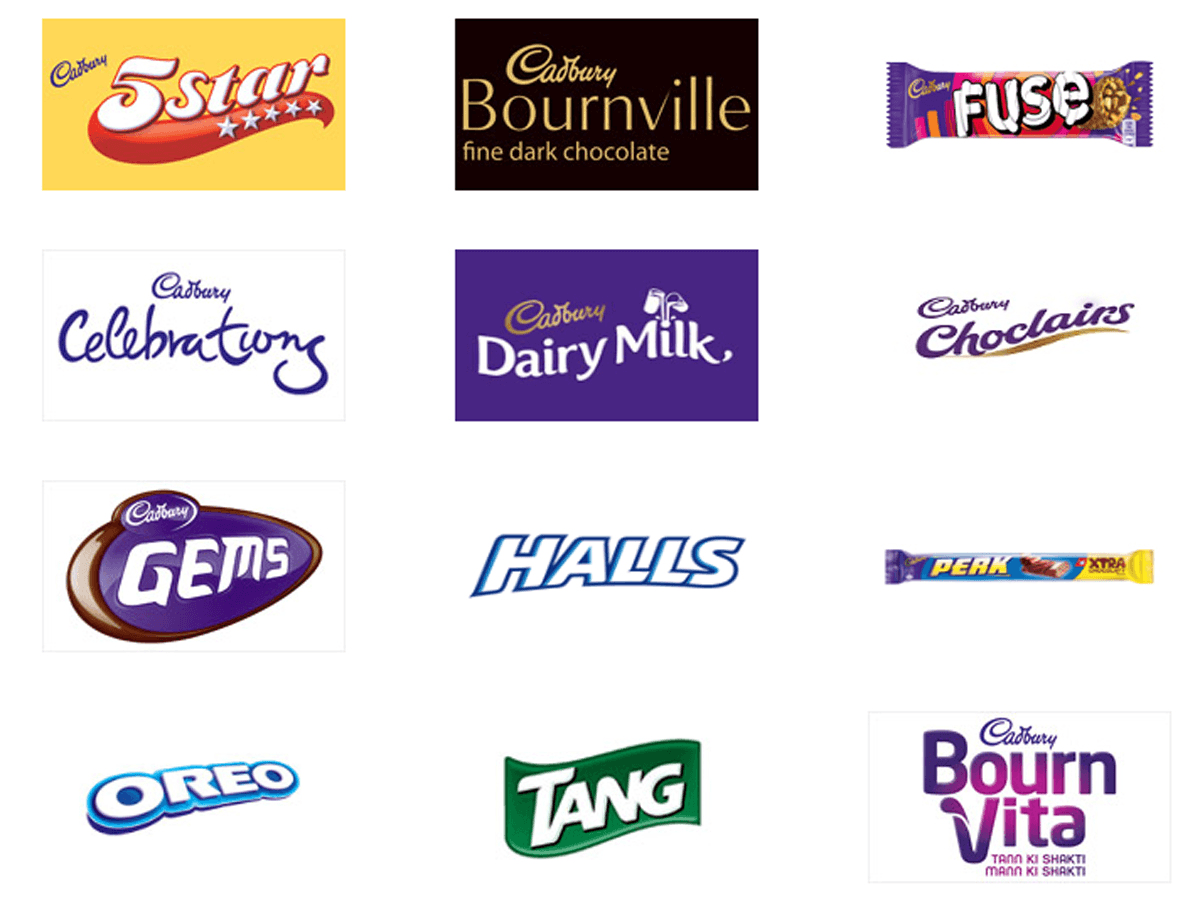
The company has evolved over the years in India and has included an array of quality products that have helped the company target loyal customers. So, let us understand its target audience by assessing it further in the coming section.
🚨 FREE MASTERCLASS
Building a Profitable Instagram Strategy
Worked with:

Register For Free
IG Content Creater With 10+ million views

Buyer Persona

Buyer’s Persona
Profession:
Web-Developer
- Seeking high-quality and trusted confectionery products
- Interested in enjoying and sharing moments of joy with family and friends
- Value innovation in flavours and product offerings
Interest & Hobbies
- Indulging in sweet treats and trying new chocolates
- Celebrating special occasions with loved ones
- Following food trends and exploring new confectionery products
Pain Points
- Concerns about sugar content and health impacts of consuming sweets
- Preference for sustainable and ethically sourced products
- The desire for more variety in low-calorie or sugar-free options
Social Media Presence
- Active on Instagram, Facebook, and Twitter
- Frequently shares and engages with content related to food, recipes, and celebrations
Cadbury uses this buyer persona to create marketing strategies that resonate with their audience’s motivations, interests, and pain points, ensuring their campaigns are both engaging and relevant.
Target Audience of Cadbury
To delve into the target audience details for Cadbury, we’ll focus on understanding their consumer demographics, preferences, and behaviours. Cadbury’s target audience typically includes:
Demographic Categorization
The company likes to experiment a lot when it comes to their packaging and taste. Kids are drawn to Cadbury products due to their colourful and eye-catching packaging. Wowie is such an example of this clever packaging that captivated children and drew them to the brand.
To target teenagers and young adults, Cadbury has trendy flavours and has introduced chocolates like Nutties, Silk, etc to cater for their needs and keep them glued to Cadbury.
Talking about adults and millennials, Cadbury’s exquisite range like Celebrations, Cadbury Temptations, Bournville, etc attracts this segment and satisfies their sweet cravings.
Geographic Categorization
With a stronghold in countries like the UK, Australia, India, South Africa, etc, Cadbury’s marketing strategy is to target now emerging countries like China, Poland and Brazil where the demand is rising for premium chocolates.
Also Read: Digital marketing courses in mumbai
Psychographic Categorisation
A key marketing strategy for Cadbury has been to link its chocolates with significant life events and celebrations, encouraging consumers to use Cadbury chocolates as a part of their festivities.
To make the brand diverse and inclusive to every customer, the brand has successfully included gluten-free and sugar-free chocolates in the marketing strategy of Cadbury like Cadbury Twirl, Bournville Orange, Creme Egg, etc to leave no stone unturned when capturing the market of chocolate lovers.
Let’s now proceed to explore the next aspect of Cadbury’s case study, that is, understanding the diverse marketing strategies employed by Cadbury to attain its profitable global position.
Cadbury’s Marketing Mix
As an iconic chocolate brand around the world, the marketing strategy of Cadbury includes a well-crafted marketing mix that assists the company in maintaining a strong brand identity, levelling up on market share and staying ahead of its competitors. Let’s understand the 4 Ps of Cadbury in detail.
Cadbury Case Study: Product
The product mix of Cadbury covers a diverse range of chocolates and other confectionery products that offer something sweet for every sweet craving. The cash cow of Cadbury, Dairy Milk holds a strong customer base and is famous for its smooth texture and super creamy taste. Let’s understand each aspect of Cadbury’s product mix in detail below:
Wide range of products : From classic to contemporary treats, Cadbury has it all. With a diverse product range, Cadbury has something or the other for each of its customers.
Signature Products : With unique products like Silk Oreo, Dairy Milk Crackle, etc, the company has unique flavours that attract consumers.
Festive and occasional delights : Gone are the days when only traditional sweets were used to celebrate any festival or joyous occasion. With the introduction of premium dry fruit chocolate boxes like the Cadbury Celebrations dry fruit range, the company has created a new category of users who can go for chocolates to celebrate auspicious occasions and milestones.
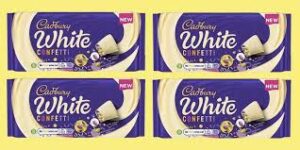
Continuous innovation : Even after being a prominent market leader with a good market share, the company aims to stay ahead of the game and evolve as the market demands. Cadbury has recently introduced Cadbury White Confetti, a milk chocolate for customers who prefer milk chocolates compared to cocoa chocolate bars.
Cadbury Case Study: Price
With a tempting variety of products, the company has strategically priced its chocolates. Cadbury aims to offer something to every segment of the society. The products are priced competitively and its premium range is slightly expensive to cater to its high-paying customers who are looking for luxury chocolates. Let’s get into the details:
Balanced pricing: Starting from a ₹1 Cadbury Eclairs to a premium bar of Bournville or a box of Celebrations, the company has a balanced price for all of its products based on its production costs, market competition, and consumer preferences.
Different treats : Apart from delicious chocolates, Cadbury offers a range of cookies and beverages to cater to different segments of their customer base.
Pricing adaptation : The company evaluates its pricing strategy as and when needed. They aim to maintain the market position without making a hole in their consumers pockets.
Cadbury Case Study: Place
With a strong market hold, the company aims to provide delectable products to every nook and corner of the world. With production facilities available in countries like the UK, Poland, Russia, India, and Australia, the company focuses on maintaining the quality of the product and giving a hint of local flavours that keeps the consumers glued to the company.
Retail stops : Hands down, Cadbury has a robust network of supply systems. across retail outlets. One can easily find a bar of Cadbury chocolate in any retail outlet.
Wholesale Network : To ensure that Cadbury’s product reaches every nook and corner of the world, the company has a strong network of wholesalers who are responsible for the retailers in their area.
Direct sales: Apart from the wholesalers and retailers, the company has set up its own establishments and vending machines to serve its customers.
Cadbury Case Study: Promotion
Cadbury leaves no chance on the table when it comes to promoting its brand or being in the limelight. The company’s marketing mix uses various marketing channels like social media, public relations activities, etc, for marketing. Let’s understand each one of them in detail:
Out-of-Home Advertising : With a significant marketing budget, the company aims to be on top of consumer’s minds when they crave chocolate. To follow this, Cadbury has come up with creative ideas for promotion and uses out-of-home advertising heavily to showcase its products. You can refer to the image below for reference:
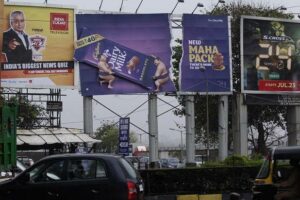
Use of Social Media : One of the biggest chocolate brands in the world knows how to keep up with the market. They understand the importance of an evolving marketing strategy and to maintain that, Cadbury is present on all the prominent social media platforms like Instagram, “X”, FaceBook, YouTube, etc.
Whether it’s a social media post or a TV commercial, the brand aims to build an emotional connection with its audience. Cadbury strategizes and posts creative stories about family or friends celebrating a moment of joy, festivals, togetherness, etc. Not just this, the brand focuses on UGC content and posts stories of their users. To keep up with the engagements, Cadbury conducts regular competitions on its social media where participants are rewarded with features, Cadbury goodies, discount codes, etc.
Catchy Taglines : Marketing and ad copies play a vital role in setting the tone of the brand and to reach to its target audience in India, the brand has used simple yet emotionally connecting taglines like “Kuch Meetha Hojae”, and “Mann Mein Laddoo Phoota” to trigger the emotions and create top of mind awareness about Cadbury.
Who knew Cadbury would use such an elaborate marketing strategy to solidify themselves in the market? But, this is not the case with just Cadbury. Many other companies use a variety of such strategies to create a buzz about themselves. Want to which of these companies are? Check out the business model of Ikea and the business model of Nike. I know two very different companies, but you will be surprised to know all about its workings.
Marketing Strategies of Cadbury
Cadbury employs various marketing strategies to maintain its market dominance. These include leveraging nostalgia, creating emotional connections, and focusing on seasonal and festive promotions.
Renowned for its innovation and wide varieties, Cadbury possesses everything that a brand needs to stand apart from the rest. The company’s basic marketing and brand principles are timeless yet open to new audiences.
Let’s discuss a few points related to the marketing strategies of Cadbury in detail:
Strong Positioning and Personality
Since Cadbury is one of the oldest players in the market, its iconic purple and white packaging builds a strong brand personality that helps users identify Cadbury products easily. Not just this, the brand has positioned itself as a go-to name when someone is craving sweets or just wants to celebrate some milestone. Cadbury’s marketing strategy has helped the brand imprint itself into its customer’s daily life and routine.
Product Innovation
Despite the success of products like Cadbury Perk, 5-Star, Gems, and Dairy Milk, the brand has continually explored new realms and flavours, never resting on its laurelsSome of its successful innovations include names like Cadbury Orea, Tang, etc.
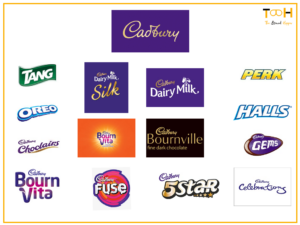
Emotional Marketing Strategy of Cadbury
Believe it or not, the company doesn’t just sell chocolate. They market the feeling that comes with eating the bar. Here, the marketing strategies of Cadbury involve a lot of emotional connections to persuade its audience. A great example of this can be the TV commercials by the brand. One can always notice a family or a group of friends or couples enjoying and cherishing Cadbury.
Strategic Collaborations
Cadbury fully recognizes that growth requires collaboration and that one cannot achieve everything alone. To grow and capture the market, Cadbury collaborated with Kwality Walls and launched ‘Kwality Walls Oreo’ ice cream. Through this marketing strategy of dairy milk, the company was able to give customers a chance to explore a new taste and allowed both brands to introduce some freshness and form a long-lasting relationship among themselves.
Corporate Social Responsibility (CSR) activities
To enhance credibility and contribute to environmental sustainability, Cadbury’s marketing strategy included constructing reviews at multiple factory locations to conserve rainwater and replenish bore wells. Additionally, Cadbury partnered with Kerala Agricultural University for cocoa research, resulting in hybrids that boosted cocoa yields.
By taking this initiative, the company provided employment opportunities to various communities and touched the lives of thousands of farmers.
Note: Consider exploring the best online marketing courses to enrich your expertise with comprehensive knowledge and the latest industry trends.
Digital Marketing Strategies
Cadbury’s digital marketing strategy relies on a diversified approach. They excel at creating engaging content, building communities on social media, and utilising various digital tools to reach their target audience effectively.
Search Engine Optimization (SEO) Strategy
This Cadbury case study illustrates how the company strategically enhances its online presence through effective SEO practices. Beyond incorporating relevant keywords, Cadbury meticulously optimizes its website by structuring content to align with user search intents. For instance, pages dedicated to popular products like Dairy Milk or 5-Star are meticulously crafted to include keywords such as “Cadbury Dairy Milk chocolate” or “Cadbury 5-Star bar,” ensuring high visibility in search results.
Moreover, Cadbury leverages high-quality images not only to enhance user experience but also to optimize them with alt tags containing keywords related to their products. This approach not only boosts accessibility but also reinforces SEO efforts by making images searchable and indexable by search engines.
Social Media Marketing Strategy of Cadbury
Cadbury has a strong presence on major platforms like Facebook, Instagram, YouTube, etc. They customize content for every platform, acknowledging the distinct user base and demographics. The brand actively engages with followers on social media platforms by sharing festive recipes, interactive content, and updates about new product launches. Furthermore, their social media feeds are filled with mouth-watering photos and videos of their chocolates.
They also create interactive campaigns, share behind-the-scenes glimpses, and run UGC initiatives( Content created by users online)to keep followers engaged. Cadbury actively responds to comments and messages, fostering a sense of connection and value for their customers.
E-commerce Strategy
Cadbury’s online store provides a seamless shopping experience, with easy access to a wide range of products, personalised gifts, and exclusive offers.
Another marketing strategy of Cadbury is building its presence with the help of a mobile app. The Cadbury Joy Deliveries app allows users to send personalised chocolate gifts and explore unique recipes, enhancing customer engagement and brand loyalty.
Influencer Marketing Strategy
Collaborating with popular food bloggers and celebrities, Cadbury leverages their reach to promote new products and engage with a broader audience. Cadbury frequently utilises influencer partnerships for hashtag campaigns. A good example was the #HowDoYouSilk campaign for Cadbury Silk Chocolate. The brand collaborated with influencers to showcase creative ways to enjoy their product, generating user-generated content and brand awareness.
Marketing and Advertising Campaigns
Cadbury’s marketing strategy embraces variety and employs diverse approaches to connect with its audience. One of Cadbury’s most famous campaigns is the ‘Gorilla’ advert, featuring a gorilla playing the drums to Phil Collins’ song ‘In the Air Tonight.’ This campaign not only captivated audiences but also greatly increased sales and brand recognition.
Their recent ‘Donate Your Words’ campaign highlights their commitment to social causes, enhancing brand loyalty and community engagement. The “Donate Your Words” campaign was rolled out through a series of emotionally resonant advertisements and social media activations, encouraging consumers to participate actively in spreading awareness and contributing to the cause of loneliness among the elderly.

Bonus: Want to unlock the potential of digital marketing for your business or career? Here are some effective ways in which you can learn digital marketing .
Top Competitors
Cadbury, of course, isn’t the only chocolate company in the world. Naturally, they face competition from several other major players in the chocolate market. The following case study will explore some of Cadbury’s top competitors:
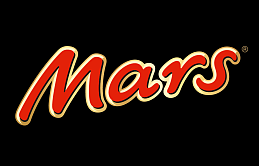
A powerhouse in the industry, Mars boasts iconic brands like Mars bars (known for their chewy nougat and chocolate coating), Snickers (the world’s best-selling candy bar, famous for its combination of peanuts, caramel, nougat, and milk chocolate), and M&M’s colourful candy buttons with a chocolate centre, offering a variety of flavours and textures). They cater to a broad audience with a focus on fun, energy, and satisfying snacking experiences.
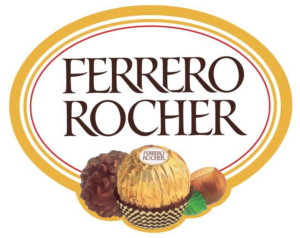
This Italian company is synonymous with luxurious chocolates. Ferrero Rocher, their flagship product, features a whole hazelnut encased in a crisp wafer, coated in milk chocolate and hazelnut pieces. Nutella, their hazelnut spread, is a global phenomenon enjoyed on bread, pastries, and even straight from the jar.
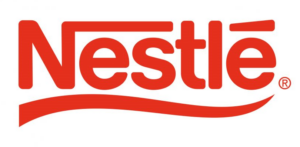
A global food and beverage giant, Nestlé has a strong presence in the chocolate market. KitKat, their most recognisable chocolate, features a wafer biscuit covered in milk chocolate and comes in a variety of flavours.
Hershey’s
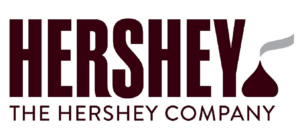
This American company is a dominant force in the US chocolate market. Their flagship product, Hershey’s Kisses, are bite-sized milk chocolate drops wrapped in silver foil. They also offer iconic brands like Reese’s (peanut butter cups in milk chocolate), Hershey’s bars (available in a variety of flavours and textures), and Jolly Rancher (hard candies with various fruit flavours).
Lindt & Sprüngli

A Swiss chocolatier known for its premium offerings, Lindt produces high-quality chocolate bars, truffles, and other confections. They are known for their smooth texture and use of high cocoa-content chocolate. Lindt caters to a discerning palate and targets consumers who appreciate luxury chocolate experiences.
Each of these competitors offers unique strengths that challenge Cadbury’s market share. By understanding its competitors’ strategies and target audiences, Cadbury can continue to innovate and adapt its offerings to stay ahead in the ever-evolving chocolate landscape.
Failed Campaigns
Cadbury’s ‘unity bar’.

The Unity Bar was a product launched by Cadbury to promote diversity and inclusion. The idea behind the Unity Bar was to celebrate different skin tones by featuring a blend of dark, blended, and white chocolate in a single bar. However, the campaign received criticism for its perceived superficiality in addressing complex social issues. Critics and consumers felt that the campaign was performative and did not genuinely contribute to advancing diversity and inclusion.
The backlash against the Unity Bar campaign highlighted concerns about companies using social issues as marketing tactics without substantive actions or commitments behind them. Cadbury faced negative feedback from various quarters, prompting them to acknowledge the criticism. In response, Cadbury refocused its efforts on implementing more meaningful diversity initiatives both within the company and in the broader community. This incident underscored the importance of authenticity and genuine commitment in corporate social responsibility efforts.
Read more about: For skill enhancement, explore our digital marketing courses in faridabad and digital marketing courses in pune , created to suit your requirements.
Being an old-school chocolate brand in the sugar-free era, Cadbury has always been successful in its offline campaigns with its engaging and relevant campaigns that have been a hit in the past, and the impact of that can be seen in the present as well.
It has also used digital marketing strategies to its advantage up to the extent there is still room for improvement. Once it successfully utilises digital fronts to its full potential, it will be able to create a very healthy overall presence. Only time will tell how it works upon its weaknesses and competes for its fair share of the market.
Interested in mastering digital marketing essentials quickly? Our complete Online Digital Marketing Course is your gateway to success in this dynamic industry.
Not quite ready to commit? Start with our Free Digital Marketing Masterclass for a sneak peek at the content and decide if it suits your needs.
Or, if your focus is on social media, dive into our Free Instagram Marketing Course for targeted insights.
Explore our digital marketing case studies featuring top companies like the marketing strategy of Spotify , the marketing strategy of Sephora , and the marketing strategy of Indian Oil Corporation for inspiration and learning.
With this, we conclude our case study on the marketing strategy of Cadbury. Don’t miss our curated digital marketing blogs—they might hold the key to your ideal course.
Frequently Asked Questions- Cadbury's Marketing Strategy
Cadbury's mission is to create delicious chocolate experiences that bring joy to people's lives while supporting ethical sourcing and sustainable practices.
Cadbury has a global workforce, but specific numbers can vary over time and by region.
Cadbury's latest product launch varies, as they regularly introduce new chocolate variations and seasonal treats to their product lineup.
Cadbury faces competition from major chocolate brands like Hershey's, Mars, and Nestlé.
The ‘Donate Your Words’ campaign by Cadbury aimed to raise awareness about loneliness among older people by removing words from its packaging to encourage conversations.
Cadbury engages with customers through social media, interactive campaigns, and personalised experiences to build connections and gather feedback.
Customers may experience concerns about product availability, pricing, and occasionally issues related to product quality or taste preferences.
The Cadbury Joy Deliveries app is a platform that allows users to send personalised Cadbury gifts to their loved ones, enhancing the gifting experience.
A notable Cadbury influencer could be someone like a popular food blogger or social media personality who promotes Cadbury products and engages with their audience.
Cadbury's Unity Bar was launched as a limited edition chocolate bar symbolising diversity and inclusivity, featuring different shades of chocolate to represent different skin tones.

Author's Note: My name is Aditya Shastri and I have written this case study with the help of my students from IIDE's online digital marketing courses in India . Practical assignments, case studies & simulations helped the students from this course present this analysis. Building on this practical approach, we are now introducing a new dimension for our online digital marketing course learners - the Campus Immersion Experience. If you found this case study helpful, please feel free to leave a comment below.
IIDE Course Recommendation

" * " indicates required fields
Get Syllabus
By providing your contact details, you agree to our Terms of Use & Privacy Policy
Aditya Shastri
Lead Trainer & Head of Learning & Development at IIDE
Leads the Learning & Development segment at IIDE. He is a Content Marketing Expert and has trained 6000+ students and working professionals on various topics of Digital Marketing. He has been a guest speaker at prominent colleges in India including IIMs...... [Read full bio]
we are design students and we were researching on Cadbury , we found your work . it is very helpful the way you have presented all the imp details in a crisp way with advertisements . GOOD WORK !!
Amazing Work Sir…I got full information I was looking for
If you’re intrigued by Cadbury’s brand journey and the secrets behind its consumer resonance, this case study offers valuable insights worth exploring further., This case also meticulously dissects Cadbury’s marketing strategy, unveiling its profound impact on Indian consumers which was very helpful for me.
Thanks for sharing. Reading this blog I got an idea about Cadbury’s marketing strategy.
Submit a Comment Cancel reply
Your email address will not be published. Required fields are marked *
Submit Comment
This site uses Akismet to reduce spam. Learn how your comment data is processed .
Related Posts

Elaborative Business Model Of LinkedIn – Detail Explanation
by Aditya Shastri | Aug 16, 2024
Quick Read The business model of LinkedIn leverages a robust freemium structure, offering...
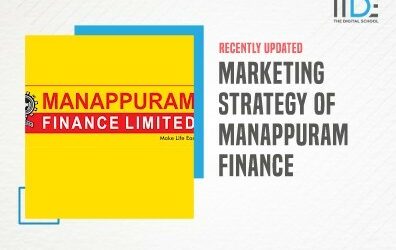
Extensive Marketing Strategy Of Manappuram Finance – In-Depth Analysis
Quick Read The marketing strategy of Manappuram Finance Limited focuses on leveraging...

Unveiling HSBC’s Robust Marketing Strategy – Detailed Insights
Quick Read The marketing strategy of HSBC focuses on leveraging digital transformation,...
I’m Interested in This Masterclass
Marketing Strategy of Cadbury: How it has mastered the art of spreading sweetness
Learn about cadbury's iconic marketing strategy and advertising campaigns. read how cadbury aces the 4ps of marketing mix - product, price, promotion & placement..
- overview#goto" data-overview-topic-param="creating-a-chocolate-empire">Creating a chocolate empire
- overview#goto" data-overview-topic-param="the-rise-of-cadbury-house-in-india">The Rise of Cadbury House in India
- overview#goto" data-overview-topic-param="logo-the-sweet-badge-of-honour">Logo: The Sweet Badge of Honour
- overview#goto" data-overview-topic-param="target-audience">Target Audience
- overview#goto" data-overview-topic-param="marketing-mix-of-cadbury">Marketing mix of Cadbury
- overview#goto" data-overview-topic-param="strategies-that-define-cadbury">Strategies that Define Cadbury
- overview#goto" data-overview-topic-param="noteworthy-marketing-campaigns">Noteworthy Marketing Campaigns
- overview#goto" data-overview-topic-param="strategies-to-steal-from">Strategies to steal from

The British multinational confectionery Cadbury has created magnificent confectionaries for almost 200 years, making it every chocolate lover's paradise. It is owned by Mondelez International and is the second-largest confectionery brand in the world, behind Mars, followed by its nearest competitor Nestle, Ferrero, and Miji. Cadbury offers something to satiate any sweet craving, from their well-known Dairy Milk chocolates to other confectionery treats like cakes, biscuits, and beverages.
However, how does it manage to operate in over 50 countries and employ nearly 50,000 people? How did Mondelez India Foods Private Limited report a 16% year-on-year jump in FY22 revenues to ₹9,296 crore ?
Read on as we evaluate how Cadbury's marketing strategy adds a little sweetness to our lives every day.
How cocoa essence helped create a chocolate empire
A dream and a passion for chocolate marked the beginning of Cadbury's history. To create chocolate that anybody might enjoy, Quaker John Cadbury who sold tea, coffee, and drinking chocolate founded his company in Birmingham, South west England, in 1824.
Starting with a humble pestle and mortar, he ground cocoa beans to make a chocolate drink that was nothing short of heavenly. As the business grew, John Cadbury moved to a larger factory on Bridge Street and began to craft chocolate bars, marking the beginning of a chocolate revolution.
Benjamin, John's brother, soon joined the company and helped it grow by introducing new products and flavors. Cadbury company launched its first chocolate bar in 1849.

Source: Telegraph
Following the incorporation of their company as "Cadbury Brothers Limited" and the realization that business was booming, the brothers decided to build a new factory named Bournville Estate in the Birmingham suburb of Bournville in 1866 to better the lives of its employees. The factory offered housing and entertainment, ensuring that the chocolate was not only delicious but also produced ethically.
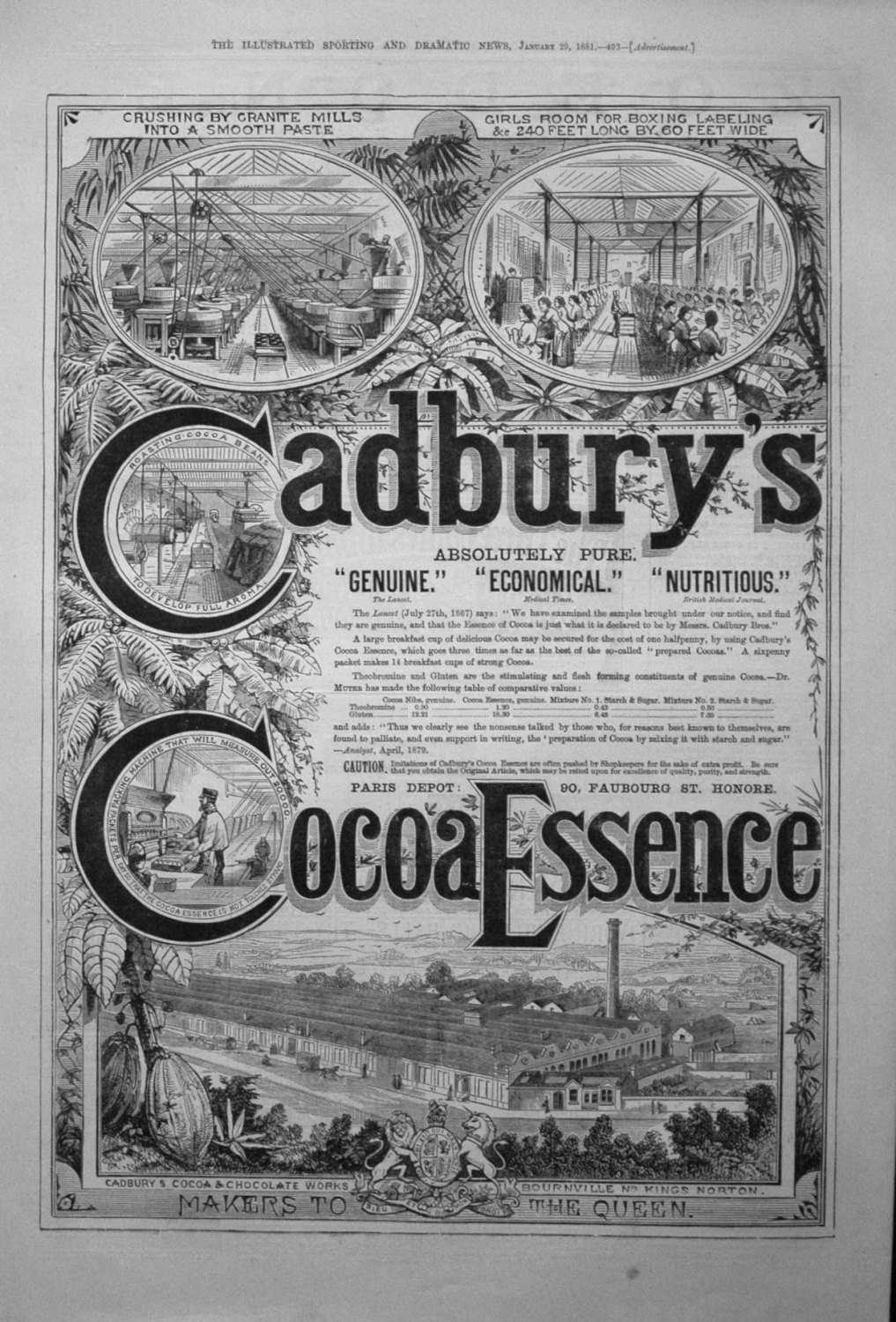
Source: Prints and ephemera
Cadbury was one of the big three British confectionery manufacturers throughout much of the 19th and 20th centuries. In 1969 Cadbury merged with Schweppes brand — an American beverage business. It was known as Cadbury Schweppes plc until 2008, only to be acquired by Kraft foods inc. in 2010. Cadbury is now owned by Mondelez International.
Cadbury has expanded over the years by buying other businesses, releasing new products, and entering new markets. Currently, it is one of the largest sectors in the global confections market and is renowned for its excellence and innovation.
In 1990, Cadbury introduced Cadbury World. It offers visitors the chance to learn about the history of Cadbury chocolate and see how it is made.

The Rise of Cadbury House in India
When Cadbury, the pride of Mondelez International, made its foray into India in 1948, it brought some sweetness to the nation by establishing its corporate headquarters in the bustling metropolis of Mumbai, Maharashtra.
Following the initial import of its well-known chocolates, Cadbury India quickly gained a monopoly in the market, with Cadbury's chocolate confectioneries portfolio accounting for an value share of 70%. Stunningly, the well-liked Dairy Milk brand alone held 40% of the whole Indian chocolate market.
As the years passed, Cadbury India's confectionery company expanded its selection of products in India by introducing several delectable Cadbury products like biscuits, candies, and beverages, solidifying its position as a household name. With Cadbury products like the beloved Cadbury Bournvita, Gems, 5-star, Eclairs, Cadbury Dairy Milk Silk, Crispello, Tang, and Oreo in addition to the traditional Dairy Milk, Cadbury has come to symbolize nostalgia for many Indians.
In 2021, the maker of Cadbury Dairy Milk reported a revenue of $1.2 billion in India. Mondelez International aims to push up India revenue to $2 billion by 2030.
Logo: The Sweet Badge of Honour
The creation of the Cadbury logo shows the company's dedication to not just producing high-quality chocolate products but also to develop a visual identity that captures its rich heritage and commitment to excellence.
The initial logo, which included a stylized representation of a cocoa tree, made a subtle reference to the company's history in the chocolate industry. But the brand's determination to stay current was evident in the more modern and abstract style that came next, being inspired by William Cadbury's sign.
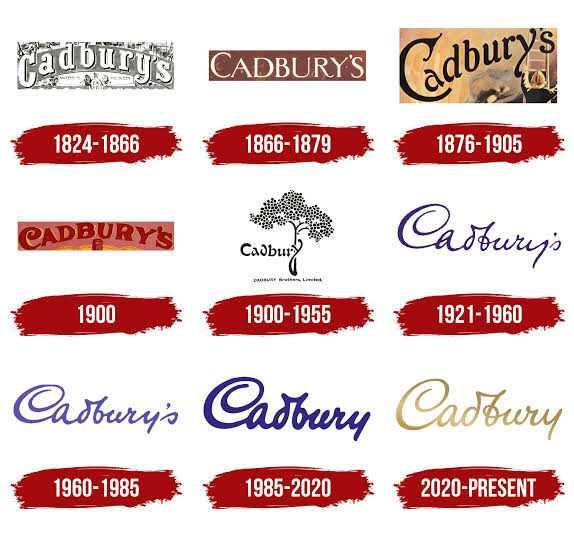
Source: Logos World
The current logo uses a strong typeface against a vibrant purple background to represent the brand's simplicity, accessibility, and timelessness.
Cadbury company also released a limited-edition version of the logo in its gold form, which is only used for the priciest and most exclusive items and promotions. The conventional purple logo is no longer the only option. The golden version of the logo conveys exclusivity and elegance, elevating the already well-known Cadbury brand to new levels of sophistication. It looks like an encrusted badge of honor.
Target Audience
Cadbury's customer base is diverse, ranging from the smallest candy enthusiasts to the pickiest chocolate connoisseurs. The company's sumptuous treats, which range from conventional chocolate bars to lavish chocolate boxes, are enjoyed by people of all ages. Whether you're looking for a tasty treat to enjoy on your own or a gift to give to loved ones, Cadbury India has something to meet every occasion.

Marketing mix of Cadbury
Cadbury has a recipe for success that is as sweet as its treats. The secret ingredient? A well-crafted marketing mix that tantalizes the taste buds of chocolate lovers everywhere. From the delectable products to the irresistible prices, to the convenient distribution channels, and the alluring Cadbury promotions, Cadbury's marketing mix is a symphony of deliciousness. Each element of the Cadbury marketing mix is carefully crafted to create a cohesive and irresistible experience for the customer.
Here's a closer look at how the Cadbury marketing mix makes every day a little sweeter:
The Cadbury product collection is as diverse as a box of chocolates, offering something for every sweet tooth to enjoy. All ages can enjoy their chocolates, which range from classic Cadbury Dairy Milk bars to the decadent delight of Creme Eggs. They also provide a vast variety of candies, gum, and pastries that will take you on a sweet experience.
The broad product list includes several Cadbury items, such as Bournville, Bournvita, Tang, Crunchie, Cadbury Dairy Milk, Dairy Milk Fruit & Nut, Caramel, Cadbury Five Star, Cadbury Dairy Milk Silk,Perk, BournVita, Bytes, Oreo, Crispello, Eclairs, etc which gives a unique take on the original Cadbury flavor.

Source: Cadbury
Want to reward yourself with a holiday treat? Cadbury India has you covered with special chocolate gifts that are suitable for any occasion, including Cadbury Celebration boxes for Diwali and Rakshabandhan, Easter eggs, Christmas selection boxes, and more.
Cadbury's product mix provides a range of options tailored to different market segments, making it a veritable gold mine of delectable treats just waiting to be discovered. Mondelez India expanded its Choco-bakery segment recently with its chocobake cookies.
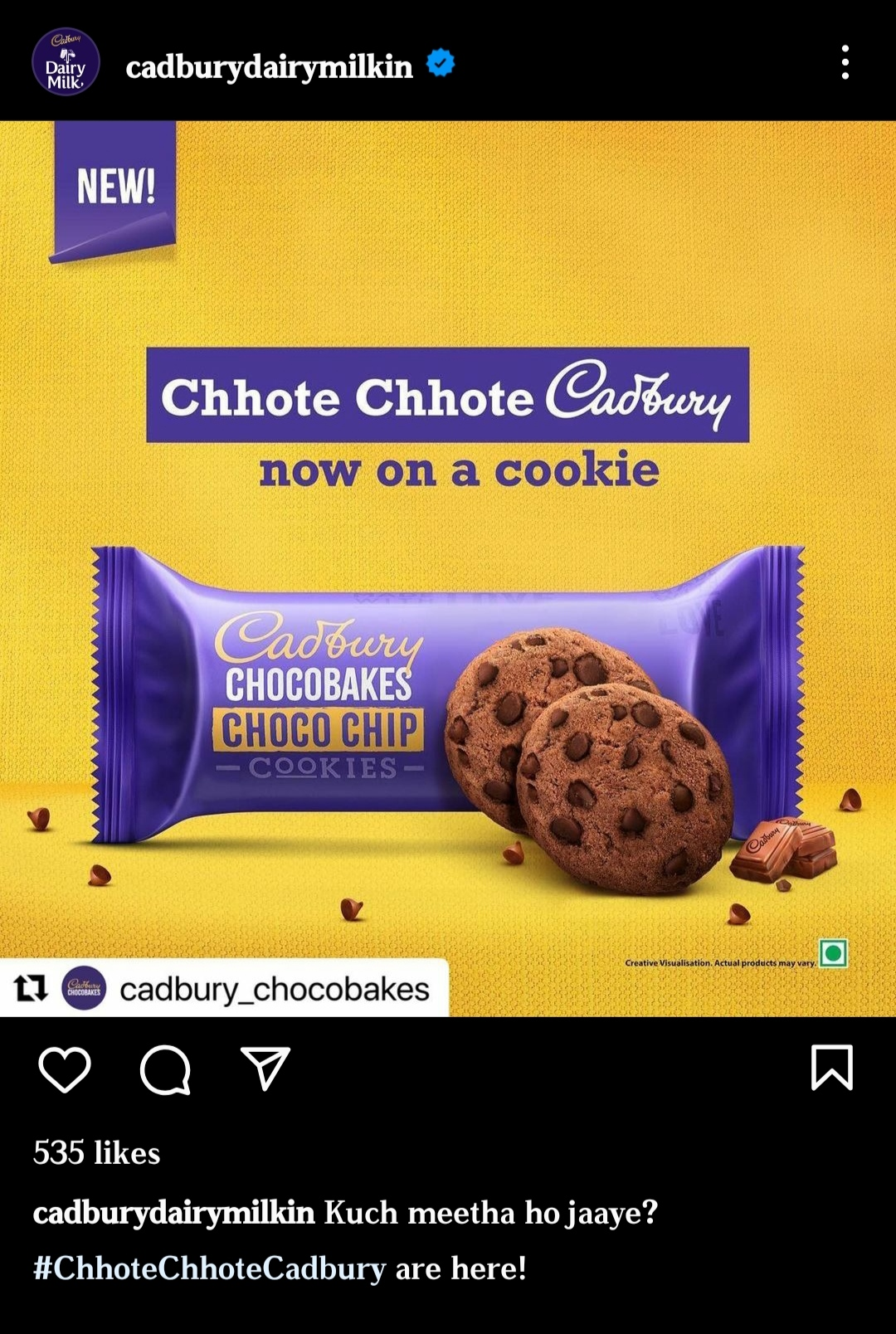
Source: Instagram
Cadbury India offers a tempting selection of goods at various pricing points. Cadbury's pricing strategy is a delicate dance between production costs, market competitiveness, and consumer desire. It offers everything from affordable, mass-market options to luxury experiences.
While the business's more luxury products, like gift boxes and expensive dark chocolate bars like Bournville or Cadbury temptations, Cadbury Dairy Milk Silk tempts those looking to indulge. Its primary range of chocolate confectionery like Eclairs, Cadbury dairy milk, and 5-Star fulfills the sweet tooth of customers on a modest budget. But that is not the end of Cadbury's mouthwatering symphony. In addition, a wide selection of expertly made cookies treats, and beverages are offered, satisfying a range of tastes and preferences.
Each Cadbury product, including Bournvita, Tang, Oreo, Dairy Milk Silk, and Dairy Milk chocolate, offers a distinctive flavor sensation at a price that has been carefully matched to the target consumer and the product's ingredients.
Cadbury India constantly evaluates its pricing strategy to make sure it keeps its position as the market leader in the chocolate confectionery business while also remaining competitive, which results in every piece of chocolate being delectable and fulfilling.
By cleverly designing a global distribution strategy, Cadbury ensures that its delicious chocolate delicacies are available in every corner of the globe — urban and rural areas. The company's primary markets include the UK, Ireland, Canada, India, Australia, New Zealand, South Africa, and a few Caribbean countries, but thanks to outposts set up there through subsidiaries and licenses, its reach extends well beyond these borders.
The corporation has production facilities in several countries, including the UK, Poland, Russia, India, and Australia. In India, it has manufacturing facilities in Thane, Induri (Pune) and Malanpur (Gwalior), Hyderabad, Bangalore, and Baddi (Himachal Pradesh) and sales offices in New Delhi, Mumbai, Kolkata, and Chennai.

The products of the corporation have a distinct flavor because of each of their preferences.
Retail locations
Cadbury chocolate bars are available in almost all supermarkets, corner shops, and grocers.

Source: Economic Times
Online Sales
Cadbury products are freely accessible on their website and other e-commerce sites for individuals who prefer the convenience of online shopping.
To ensure that its chocolate bars reach every nook and crevice of the market, Cadbury India also makes its products available to wholesalers and distributors, who serve as the industry's gatekeepers.
Direct sales
Cadbury products are also offered through company-owned establishments and vending machines for individuals who enjoy a decent vending machine experience.
Cadbury ships its goods to a large number of nations to make sure that everyone can enjoy a taste of Cadbury chocolate wherever they may be.
The distribution strategy used by Cadbury is a smart mix of many outlets. The brand stands out and establishes itself as a true worldwide leader in the sector thanks to its constant dedication to making its chocolates accessible to chocolate lovers from urban and rural areas.
As innovative as Cadbury's selection of chocolate flavors is, so to is Cadbury's marketing strategy. To make sure that everyone is continually thinking about their delicious treats, Cadbury India uses a variety of strategies from online to offline campaigns.
Advertising
Cadbury uses a range of advertising techniques to spread the word about its products. They ensure that their chocolate is always in the spotlight by featuring their recognizable Dairy Milk bars in print and television promotions.

Source: Business Insider India
They also take advantage of internet channels to attract younger clients and create a sense of brand community. One successful example is Cadbury's "Tastes Like This Feels" campaign, which used heartwarming commercials to show how chocolate can bring people together to create an emotional connection with consumers.
Public relations
Cadbury uses PR to generate positive press and bolster their brand. To develop their brand and establish relationships with their target demographic, they have sponsored events such as music festivals, sporting competitions, and philanthropic endeavors.
Runners received free chocolate bars as part of Cadbury's partnership with the London Marathon to create positive buzz and boost brand loyalty while Cadbury Fuse served as the 2023 Tata Mumbai Marathon's official snacking partner.

Source: SportsMintMedia
Sales Promotion
Cadbury uses a range of sales promotion strategies, such as discounts, coupons, and competitions, to increase sales and entice new customers. They have developed programs, such as "Buy one, get one free" and "Win a vacation to Cadbury World," to tempt customers to indulge in several chocolate sweets.
Social media marketing
The biggest chocolate manufacturer in the world, Cadbury, is aware that the secret to their success on social media is providing a delectable and entertaining experience for their audience. On a variety of social media platforms, such as Facebook, Twitter, Instagram, and YouTube, they post enticing images and videos of their delectable chocolates.
By introducing new products made of chocolate, running contests, and hosting promotions, Cadbury keeps their customers yearning for more.
But Cadbury goes above and beyond with their social media approach to foster a sense of community around their brand in addition to just selling chocolate. They ensure that their clients feel like they are a part of the Cadbury family by responding to comments and messages and conducting interactive initiatives.
Cadbury's social media marketing ensures that engagement and excitement are maintained year-round for both the brand and its followers. Apart from other social media platforms, YouTube Channel —YouTube Cadbury India is the primary medium for executing marketing campaigns.
However virtual presence is one of the pain points Cadbury India needs to work on to stay ahead of the competition.
Strategies that Define Cadbury
Cadbury, the chocolate connoisseur, has a recipe for success that is as rich and diverse as the chocolate varieties it offers. With a strong sense of brand identity, innovative product development , and great emotive marketing, Cadbury possesses all the elements needed for a successful strategy. What sets Cadbury apart, though, is its ability to forge partnerships that give its marketing strategy a competitive edge.
Strong brand identity
Cadbury's famous purple and white logo represents taste and quality. Chocolate lovers have grown to appreciate and believe in this indulgence promise.
Innovative product development
Cadbury's R&D team is similar to Willy Wonka's chocolate factory in that it constantly tries out new flavors and packaging to create a unique and exciting chocolate experience.
Emotional marketing
Cadbury understands that chocolate is more than just a treat; it's an experience. Cadbury has been able to connect with customers on a deeper level through storytelling and emotional appeal, resulting in loyal fans.
CSR (Corporate Social Responsibility)
Cadbury is conscious of the luxury and responsibility that comes with managing a responsible business. Due to its efforts in sustainable and fair trade, Cadbury has been able to build a strong reputation and form stronger relationships with its customers.
Partnership
Cadbury is aware that success involves more than just one person—it demands a team. Through partnerships with other businesses, Cadbury India has been able to access a larger market and provide consumers with unique and fascinating chocolate experiences. Cadbury partnered with an NGO & the Zee Network to say thanks to the unsung heroes of the lockdown. Cadbury India also partnered with Reliance jio to launch an initiative called ' The Wrapper That Gives .' It also has partnered with Hindustan Unilever Limited.
Marketing Campaigns that helped Cadbury become a part of Indian audiences' celebrations:
Since its debut television advertisement in 1955 to the prized Grand Prix Lion winner for its famous Gorilla campaign at the 2008 Cannes International Festival of Creativity, Cadbury has been known for its meticulously produced and emotionally stirring marketing campaigns. Each advertisement is carefully designed to increase sales and solidify Cadbury's reputation among customers.
Here are successful Marketing campaigns of Cadbury India's from Kuch meetha ho jaaye to Kiss Me jingle.
Kuch Meetha Ho Jaaye" Cadbury marketing campaign
To capitalize on people's craving for sweet moments and festivities, Cadbury India's 2017 "Kuch Meetha Ho Jaaye" campaign used a subtly effective call to action. The lovely campaign successfully combined indulgence, celebration, and the emotive power of sweets to deliver a strong and enduring brand message.
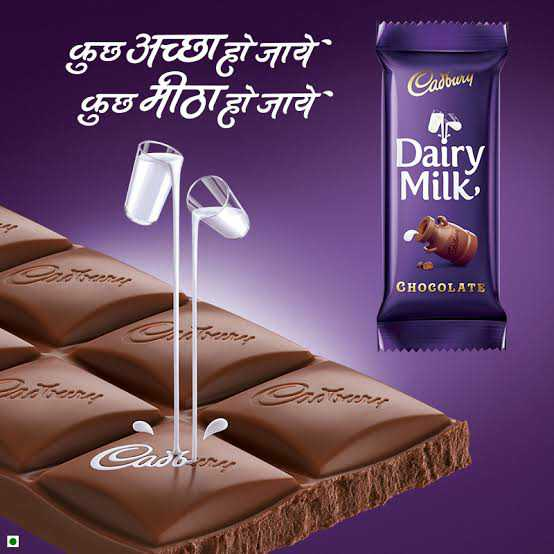
Source: Facebook
Cadbury India did this by combining television advertisements, digital marketing, and carefully chosen promotions and events. It emphasized the emotional connection customers have with Cadbury products, making them the go-to option for satiating sweet cravings. It also highlighted how versatile Cadbury's products are in elevating special occasions, from small events to festivals.
How Far Will You Go for Love
2010 saw the premiere of Cadbury India's "How Far Will You Go For Love" campaign. This astute dairy milk campaign aimed at appealing to the core of human emotions. It challenges consumers to think about the lengths they would go to display their love for others and portrays Cadbury's chocolate goods as potent expressions of devotion through moving advertising, events, and promotions.
To create a strong and durable brand message that engages clients emotionally, the campaign, which was specifically created for millennials, combines nostalgia, romanticism, and longing. It is endorsed by Kartik Aryan, a well-known figure in the young culture, and uses the hashtag #PopYourHeartOut.

Kuch khaas hain Zindagi Mein
When Cadbury launched this ad campaign back in the 90s, it was nothing short of revolutionary. Picture it: A cricket match, a player smashes the ball out of the park, and in that moment of pure elation, a young woman breaks out into an impromptu dance, chocolate bar in hand. It was a scene that shattered stereotypes and defined a new era of chocolate appreciation.

Source: Exchange4media
The lovely campaign was such a hit that Cadbury recently brought it back to life, this time with a twist. A female cricketer hits a six, and a male spectator runs onto the field, dancing with joy. And all the while, the iconic slogan "Kuchh Khaas Hai Zindagi Mein" plays in the background, perfectly capturing the unrestrained love and joy of the moment. This ad campaign by Cadbury India was a game-changer, a true masterpiece of advertising.
Cadbury's Oreo Biscuit: Stay Playful at Home
Amid the Covid-19 pandemic's volatile environment, Cadbury's Oreo India Marketing campaign provided a different and welcome perspective. The campaign's slogan was "Make Way for Play," and its target audience was young children. The message of being safe and at home, which was expertly timed and meticulously planned, provided a sense of optimism and hope during a difficult period.

Source: Digitas
Cadbury Dairy Milk Campaign: Kiss Me Jingle
Advertising jingles have the potential to be a potent instrument for deeply ingraining a brand in consumers' minds when used well. Cadbury brand has provided an instance of this strategy with its enduring and alluring "Kiss Me" jingle. A marketing campaign for the delectable Cadbury Dairy Milk Silk chocolate initially featured a catchy melody.
Since then, it has grown to be identified with the business and has made countless additional appearances in ads. Due to the song and the marketing campaign, Dairy Milk Silk chocolate gained a lot of popularity, and its allure has persisted throughout time.
Strategies to steal from Marketing Strategy of Cadbury:
Here are some major takeaways marketers and business owners can have from the Cadbury marketing strategy:
A brand that warms the heart
The major objective of the Cadbury marketing strategy is to establish a strong emotional bond with its customers. They are adept at using alliances, sponsorships, and focused advertising to make their brand appear like a cozy embrace on a frigid day. Developing strong emotional bonds with clients could be a very successful strategy for boosting brand awareness and loyalty.
A taste of the immersive
Cadbury uses experiential marketing to provide its customers with a first-hand encounter with the brand. Through the immersive experiences they provide, customers can engage with the business uniquely and memorably. Experiential marketing strategy can create original and memorable brand experiences for customers.
A buffet of sweet treats
Cadbury's product mix is as diverse as a box of chocolates, with something for every sweet tooth. From classic Dairy Milk bars to the gooey, delicious goodness of Creme Eggs, they cater to all tastes. Offering a diversified product mix can help to cater to different consumer preferences and tastes, increasing sales and market share.
Pricing that's just right
Cadbury has a dynamic pricing strategy that is tailored to different market segments. They provide a combination of skimming, penetration , price discrimination, and bundle pricing to make sure that everyone can indulge in their delectable pleasures. A dynamic pricing approach might help you reach out to different market segments while remaining profitable.
Always within reach
Because of the company's extensive network of distribution channels, which is as extensive as its chocolate bars, Cadbury chocolate is always readily accessible. Retail establishments, online sales, wholesale, direct sales, and export are all ways to get products. Having a wide distribution network can increase the availability of products and make it more convenient for customers to purchase.
Promotion that's hard to resist
Cadbury's marketing strategy is equally inventive as its variety of chocolate flavors. They employ different marketing strategies, such as direct marketing, personal selling, sales promotion planning, marketing campaigns, and public relations, to make sure that everyone is constantly thinking about their delectable delights. Brands may raise their awareness and boost sales by developing innovative and captivating promotion techniques.
Quality and innovation at the core
Cadbury's marketing and product activities reflect the excellence and innovation for which the company is renowned. This is evident in their commitment to using products from ethical and sustainable sources, as well as in their constant introduction of fresh goods and flavors. Setting innovation and quality as top priorities can help a business stand out from the competition and earn a reputation for excellence.
In closing, the best way to describe Cadbury's marketing strategy is as a masterful blend of brand development, nostalgia, and innovation. Cadbury has been effective in building familiarity and trust with its target audience by leveraging the power of indulgence and commercial themes that evoke nostalgia.
The strategic partnerships that Cadbury has developed with important parties, like suppliers and retailers, have helped to strengthen its position as the market leader in the global confectionery industry. The Cadbury marketing strategy is a fascinating case study for the marketing sector because of the convergence of all these factors. To get your foot in the snacking market you can also go through Dunkin Donuts marketing strategy.
- popover#mouseOver mouseout->popover#mouseOut" data-popover-translate-x="-25%" , data-popover-translate-y="-220%"> Copy link
- bottom-bar#toggleTagsSection"> popover#mouseOver mouseout->popover#mouseOut" data-popover-translate-x="-25%" , data-popover-translate-y="-220%"> Copy Link
- bottom-bar#toggleTagsSection">

You'll love these articles too!

Co-founder at Flexiple, buildd & Remote Tools ($3 million revenue, bootstrapped)
Samsung's Marketing Strategy: How Samsung became a Pioneer in the Electronics Industry despite all odds
Learn about Samsung's iconic marketing strategy and advertising campaigns. Read how Samsung aces the 4Ps of marketing mix - Product, Price, Promotion & Placement.

Co-founder & CEO at Flexiple ($3mn+ revenue, bootstrapped) & buildd.co | Helping Startup...
Monster Energy Marketing Strategy: How Monster become a market leader by 'Unleashing the Beast'?
Learn about Monster's iconic marketing strategy and advertising campaigns. Read how Monster aces the 4Ps of marketing mix - Product, Price, Promotion & Placement.

Breaking Down The Maruti Suzuki Marketing Strategy: How they became a brand that rules India's automobile market
Learn about Maruti Suzuki's iconic marketing strategy and advertising campaigns. Read how Maruti Suzuki's aces the 4Ps of marketing mix - Product, Price, Promotion & Placement.

Clinical Research | Data Analytics

Partner at Deloitte | Banking & Capital Markets | Cloud Strategy | FinOps Offering Leader | Board...

- Silver Bee Group
- [email protected]

- NEW SOLUTION
- Top Visitors
- Popular Topics
- Newest Members
- Newest Papers
- Top Donators

Marketing Strategy Of Cadbury
| Word (s) : | 1033 |
|---|---|
| Pages (s) : | 5 |
| View (s) : | 665 |
| Rank : | 0 |

- University Login
| Google+ | |
| or Login with Email | |
Recent Topics
New entries.
- Quality Parts Company
- Lincoln Electric
- Vêtements Ltée
- Google Case Analysis
Most Recent Request
- oilwell cable comp
- research methods
- human resource sho
- toyota adopts a st
Ease your MBA workload and get more time for yourself

Cadbury Case Study
Spots v stripes campaign.

The Results
Cadbury, the world's 2nd largest confectionary company, sponsored and was the official treat provider to the London 2012 Olympics. To activate its sponsorship Cadbury launched the Spots v Stripes campaign. At the heart of the integrated two-year campaign was Race Season - a core campaign to supercharge consumer engagement - Cadbury wanted to encourage the public to enter to the spirit of the Games by competing online, in person and at home.
The Solution
Guinness World Records based its solution on Cadbury’s innovative concept of bringing the spirit of the London2012 Games to the public through records. The solution aimed to use record-breaking to create everyday heroes from everyday tasks . With the help of Guinness World Records, Cadbury asked the British public to claim their place in history as the Fastest tea maker or Fastest doodler. The unique campaign was fully integrated across TV, outdoor, print, online and social media. It was supported by nationwide experiential events where the public could go head-to-head with celebrities to secure a world record.
The ‘Spots v Stripes’ campaign has helped the Cadbury brand hit a five-year market-share high. — Daryl Fielding, Vice-President Marketing at Cadbury, Kraft Foods
Don't have an account? Sign up now
Already have an account login, get 10% off on your next order.
Subscribe now to get your discount coupon *Only correct email will be accepted
(Approximately ~ 0.0 Page)
Total Price
Thank you for your email subscription. Check your email to get Coupon Code.
Cadbury Schweppes Capturing Confectionery B Case Analysis and Case Solution
Posted by Peter Williams on Aug-09-2018
Introduction of Cadbury Schweppes Capturing Confectionery B Case Solution
The Cadbury Schweppes Capturing Confectionery B case study is a Harvard Business Review case study, which presents a simulated practical experience to the reader allowing them to learn about real life problems in the business world. The Cadbury Schweppes Capturing Confectionery B case consisted of a central issue to the organization, which had to be identified, analysed and creative solutions had to be drawn to tackle the issue. This paper presents the solved Cadbury Schweppes Capturing Confectionery B case analysis and case solution. The method through which the analysis is done is mentioned, followed by the relevant tools used in finding the solution.
The case solution first identifies the central issue to the Cadbury Schweppes Capturing Confectionery B case study, and the relevant stakeholders affected by this issue. This is known as the problem identification stage. After this, the relevant tools and models are used, which help in the case study analysis and case study solution. The tools used in identifying the solution consist of the SWOT Analysis, Porter Five Forces Analysis, PESTEL Analysis, VRIO analysis, Value Chain Analysis, BCG Matrix analysis, Ansoff Matrix analysis, and the Marketing Mix analysis. The solution consists of recommended strategies to overcome this central issue. It is a good idea to also propose alternative case study solutions, because if the main solution is not found feasible, then the alternative solutions could be implemented. Lastly, a good case study solution also includes an implementation plan for the recommendation strategies. This shows how through a step-by-step procedure as to how the central issue can be resolved.
Problem Identification of Cadbury Schweppes Capturing Confectionery B Case Solution
Harvard Business Review cases involve a central problem that is being faced by the organization and these problems affect a number of stakeholders. In the problem identification stage, the problem faced by Cadbury Schweppes Capturing Confectionery B is identified through reading of the case. This could be mentioned at the start of the reading, the middle or the end. At times in a case analysis, the problem may be clearly evident in the reading of the HBR case. At other times, finding the issue is the job of the person analysing the case. It is also important to understand what stakeholders are affected by the problem and how. The goals of the stakeholders and are the organization are also identified to ensure that the case study analysis are consistent with these.
Analysis of the Cadbury Schweppes Capturing Confectionery B HBR Case Study
The objective of the case should be focused on. This is doing the Cadbury Schweppes Capturing Confectionery B Case Solution. This analysis can be proceeded in a step-by-step procedure to ensure that effective solutions are found.
- In the first step, a growth path of the company can be formulated that lays down its vision, mission and strategic aims. These can usually be developed using the company history is provided in the case. Company history is helpful in a Business Case study as it helps one understand what the scope of the solutions will be for the case study.
- The next step is of understanding the company; its people, their priorities and the overall culture. This can be done by using company history. It can also be done by looking at anecdotal instances of managers or employees that are usually included in an HBR case study description to give the reader a real feel of the situation.
- Lastly, a timeline of the issues and events in the case needs to be made. Arranging events in a timeline allows one to predict the next few events that are likely to take place. It also helps one in developing the case study solutions. The timeline also helps in understanding the continuous challenges that are being faced by the organisation.
SWOT analysis of Cadbury Schweppes Capturing Confectionery B
An important tool that helps in addressing the central issue of the case and coming up with Cadbury Schweppes Capturing Confectionery B HBR case solution is the SWOT analysis.
- The SWOT analysis is a strategic management tool that lists down in the form of a matrix, an organisation's internal strengths and weaknesses, and external opportunities and threats. It helps in the strategic analysis of Cadbury Schweppes Capturing Confectionery B.
- Once this listing has been done, a clearer picture can be developed in regards to how strategies will be formed to address the main problem. For example, strengths will be used as an advantage in solving the issue.
Therefore, the SWOT analysis is a helpful tool in coming up with the Cadbury Schweppes Capturing Confectionery B Case Study answers. One does not need to remain restricted to using the traditional SWOT analysis, but the advanced TOWS matrix or weighted average SWOT analysis can also be used.
Porter Five Forces Analysis for Cadbury Schweppes Capturing Confectionery B
Another helpful tool in finding the case solutions is of Porter's Five Forces analysis. This is also a strategic tool that is used to analyse the competitive environment of the industry in which Cadbury Schweppes Capturing Confectionery B operates in. Analysis of the industry is important as businesses do not work in isolation in real life, but are affected by the business environment of the industry that they operate in. Harvard Business case studies represent real-life situations, and therefore, an analysis of the industry's competitive environment needs to be carried out to come up with more holistic case study solutions. In Porter's Five Forces analysis, the industry is analysed along 5 dimensions.
- These are the threats that the industry faces due to new entrants.
- It includes the threat of substitute products.
- It includes the bargaining power of buyers in the industry.
- It includes the bargaining power of suppliers in an industry.
- Lastly, the overall rivalry or competition within the industry is analysed.
This tool helps one understand the relative powers of the major players in the industry and its overall competitive dynamics. Actionable and practical solutions can then be developed by keeping these factors into perspective.
PESTEL Analysis of Cadbury Schweppes Capturing Confectionery B
Another helpful tool that should be used in finding the case study solutions is the PESTEL analysis. This also looks at the external business environment of the organisation helps in finding case study Analysis to real-life business issues as in HBR cases.
- The PESTEL analysis particularly looks at the macro environmental factors that affect the industry. These are the political, environmental, social, technological, environmental and legal (regulatory) factors affecting the industry.
- Factors within each of these 6 should be listed down, and analysis should be made as to how these affect the organisation under question.
- These factors are also responsible for the future growth and challenges within the industry. Hence, they should be taken into consideration when coming up with the Cadbury Schweppes Capturing Confectionery B case solution.
VRIO Analysis of Cadbury Schweppes Capturing Confectionery B
This is an analysis carried out to know about the internal strengths and capabilities of Cadbury Schweppes Capturing Confectionery B. Under the VRIO analysis, the following steps are carried out:
- The internal resources of Cadbury Schweppes Capturing Confectionery B are listed down.
- Each of these resources are assessed in terms of the value it brings to the organization.
- Each resource is assessed in terms of how rare it is. A rare resource is one that is not commonly used by competitors.
- Each resource is assessed whether it could be imitated by competition easily or not.
- Lastly, each resource is assessed in terms of whether the organization can use it to an advantage or not.
The analysis done on the 4 dimensions; Value, Rareness, Imitability, and Organization. If a resource is high on all of these 4, then it brings long-term competitive advantage. If a resource is high on Value, Rareness, and Imitability, then it brings an unused competitive advantage. If a resource is high on Value and Rareness, then it only brings temporary competitive advantage. If a resource is only valuable, then it’s a competitive parity. If it’s none, then it can be regarded as a competitive disadvantage.
Value Chain Analysis of Cadbury Schweppes Capturing Confectionery B
The Value chain analysis of Cadbury Schweppes Capturing Confectionery B helps in identifying the activities of an organization, and how these add value in terms of cost reduction and differentiation. This tool is used in the case study analysis as follows:
- The firm’s primary and support activities are listed down.
- Identifying the importance of these activities in the cost of the product and the differentiation they produce.
- Lastly, differentiation or cost reduction strategies are to be used for each of these activities to increase the overall value provided by these activities.
Recognizing value creating activities and enhancing the value that they create allow Cadbury Schweppes Capturing Confectionery B to increase its competitive advantage.
BCG Matrix of Cadbury Schweppes Capturing Confectionery B
The BCG Matrix is an important tool in deciding whether an organization should invest or divest in its strategic business units. The matrix involves placing the strategic business units of a business in one of four categories; question marks, stars, dogs and cash cows. The placement in these categories depends on the relative market share of the organization and the market growth of these strategic business units. The steps to be followed in this analysis is as follows:
- Identify the relative market share of each strategic business unit.
- Identify the market growth of each strategic business unit.
- Place these strategic business units in one of four categories. Question Marks are those strategic business units with high market share and low market growth rate. Stars are those strategic business units with high market share and high market growth rate. Cash Cows are those strategic business units with high market share and low market growth rate. Dogs are those strategic business units with low market share and low growth rate.
- Relevant strategies should be implemented for each strategic business unit depending on its position in the matrix.
The strategies identified from the Cadbury Schweppes Capturing Confectionery B BCG matrix and included in the case pdf. These are either to further develop the product, penetrate the market, develop the market, diversification, investing or divesting.
Ansoff Matrix of Cadbury Schweppes Capturing Confectionery B
Ansoff Matrix is an important strategic tool to come up with future strategies for Cadbury Schweppes Capturing Confectionery B in the case solution. It helps decide whether an organization should pursue future expansion in new markets and products or should it focus on existing markets and products.
- The organization can penetrate into existing markets with its existing products. This is known as market penetration strategy.
- The organization can develop new products for the existing market. This is known as product development strategy.
- The organization can enter new markets with its existing products. This is known as market development strategy.
- The organization can enter into new markets with new products. This is known as a diversification strategy.
The choice of strategy depends on the analysis of the previous tools used and the level of risk the organization is willing to take.
Marketing Mix of Cadbury Schweppes Capturing Confectionery B
Cadbury Schweppes Capturing Confectionery B needs to bring out certain responses from the market that it targets. To do so, it will need to use the marketing mix, which serves as a tool in helping bring out responses from the market. The 4 elements of the marketing mix are Product, Price, Place and Promotions. The following steps are required to carry out a marketing mix analysis and include this in the case study analysis.
- Analyse the company’s products and devise strategies to improve the product offering of the company.
- Analyse the company’s price points and devise strategies that could be based on competition, value or cost.
- Analyse the company’s promotion mix. This includes the advertisement, public relations, personal selling, sales promotion, and direct marketing. Strategies will be devised which makes use of a few or all of these elements.
- Analyse the company’s distribution and reach. Strategies can be devised to improve the availability of the company’s products.
Cadbury Schweppes Capturing Confectionery B Blue Ocean Strategy
The strategies devised and included in the Cadbury Schweppes Capturing Confectionery B case memo should have a blue ocean strategy. A blue ocean strategy is a strategy that involves firms seeking uncontested market spaces, which makes the competition of the company irrelevant. It involves coming up with new and unique products or ideas through innovation. This gives the organization a competitive advantage over other firms, unlike a red ocean strategy.
Competitors analysis of Cadbury Schweppes Capturing Confectionery B
The PESTEL analysis discussed previously looked at the macro environmental factors affecting business, but not the microenvironmental factors. One of the microenvironmental factors are competitors, which are addressed by a competitor analysis. The Competitors analysis of Cadbury Schweppes Capturing Confectionery B looks at the direct and indirect competitors within the industry that it operates in.
- This involves a detailed analysis of their actions and how these would affect the future strategies of Cadbury Schweppes Capturing Confectionery B.
- It involves looking at the current market share of the company and its competitors.
- It should compare the marketing mix elements of competitors, their supply chain, human resources, financial strength etc.
- It also should look at the potential opportunities and threats that these competitors pose on the company.
Organisation of the Analysis into Cadbury Schweppes Capturing Confectionery B Case Study Solution
Once various tools have been used to analyse the case, the findings of this analysis need to be incorporated into practical and actionable solutions. These solutions will also be the Cadbury Schweppes Capturing Confectionery B case answers. These are usually in the form of strategies that the organisation can adopt. The following step-by-step procedure can be used to organise the Harvard Business case solution and recommendations:
- The first step of the solution is to come up with a corporate level strategy for the organisation. This part consists of solutions that address issues faced by the organisation on a strategic level. This could include suggestions, changes or recommendations to the company's vision, mission and its strategic objectives. It can include recommendations on how the organisation can work towards achieving these strategic objectives. Furthermore, it needs to be explained how the stated recommendations will help in solving the main issue mentioned in the case and where the company will stand in the future as a result of these.
- The second step of the solution is to come up with a business level strategy. The HBR case studies may present issues faced by a part of the organisation. For example, the issues may be stated for marketing and the role of a marketing manager needs to be assumed. So, recommendations and suggestions need to address the strategy of the marketing department in this case. Therefore, the strategic objectives of this business unit (Marketing) will be laid down in the solutions and recommendations will be made as to how to achieve these objectives. Similar would be the case for any other business unit or department such as human resources, finance, IT etc. The important thing to note here is that the business level strategy needs to be aligned with the overall corporate strategy of the organisation. For example, if one suggests the organisation to focus on differentiation for competitive advantage as a corporate level strategy, then it can't be recommended for the Cadbury Schweppes Capturing Confectionery B Case Study Solution that the business unit should focus on costs.
- The third step is not compulsory but depends from case to case. In some HBR case studies, one may be required to analyse an issue at a department. This issue may be analysed for a manager or employee as well. In these cases, recommendations need to be made for these people. The solution may state that objectives that these people need to achieve and how these objectives would be achieved.
The case study analysis and solution, and Cadbury Schweppes Capturing Confectionery B case answers should be written down in the Cadbury Schweppes Capturing Confectionery B case memo, clearly identifying which part shows what. The Cadbury Schweppes Capturing Confectionery B case should be in a professional format, presenting points clearly that are well understood by the reader.
Alternate solution to the Cadbury Schweppes Capturing Confectionery B HBR case study
It is important to have more than one solution to the case study. This is the alternate solution that would be implemented if the original proposed solution is found infeasible or impossible due to a change in circumstances. The alternate solution for Cadbury Schweppes Capturing Confectionery B is presented in the same way as the original solution, where it consists of a corporate level strategy, business level strategy and other recommendations.
Implementation of Cadbury Schweppes Capturing Confectionery B Case Solution
The case study does not end at just providing recommendations to the issues at hand. One is also required to provide how these recommendations would be implemented. This is shown through a proper implementation framework. A detailed implementation framework helps in distinguishing between an average and an above average case study answer. A good implementation framework shows the proposed plan and how the organisations' resources would be used to achieve the objectives. It also lays down the changes needed to be made as well as the assumptions in the process.
- A proper implementation framework shows that one has clearly understood the case study and the main issue within it.
- It shows that one has been clarified with the HBR fundamentals on the topic.
- It shows that the details provided in the case have been properly analysed.
- It shows that one has developed an ability to prioritise recommendations and how these could be successfully implemented.
- The implementation framework also helps by removing out any recommendations that are not practical or actionable as these could not be implemented. Therefore, the implementation framework ensures that the solution to the Cadbury Schweppes Capturing Confectionery B Harvard case is complete and properly answered.
Recommendations and Action Plan for Cadbury Schweppes Capturing Confectionery B case analysis
For Cadbury Schweppes Capturing Confectionery B, based on the SWOT Analysis, Porter Five Forces Analysis, PESTEL Analysis, VRIO analysis, Value Chain Analysis, BCG Matrix analysis, Ansoff Matrix analysis, and the Marketing Mix analysis, the recommendations and action plan are as follows:
- Cadbury Schweppes Capturing Confectionery B should focus on making use of its strengths identified from the VRIO analysis to make the most of the opportunities identified from the PESTEL.
- Cadbury Schweppes Capturing Confectionery B should enhance the value creating activities within its value chain.
- Cadbury Schweppes Capturing Confectionery B should invest in its stars and cash cows, while getting rid of the dogs identified from the BCG Matrix analysis.
- To achieve its overall corporate and business level objectives, it should make use of the marketing mix tools to obtain desired results from its target market.
Baron, E. (2015). How They Teach the Case Method At Harvard Business School. Retrieved from https://poetsandquants.com/2015/09/29/how-they-teach-the-case-method-at-harvard-business-school/
Bartol. K, & Martin, D. (1998). Management, 3rd edition. Boston: Irwin McGrawHill.
Free Management E-Books. (2013a). PESTLE Analysis. Retrieved from http://www.free-management-ebooks.com/dldebk-pdf/fme-pestle-analysis.pdf
Gupta, A. (2013). Environment & PEST analysis: an approach to the external business environment. International Journal of Modern Social Sciences, 2(1), 34-43.
Hambrick, D. C., MacMillan, I. C., & Day, D. L. (1982). Strategic attributes and performance in the BCG matrix—A PIMS-based analysis of industrial product businesses. Academy of Management Journal, 25(3), 510-531.
Hill, C., & Jones, G. (2010). Strategic Management Theory: An Integrated Approach, Ninth Ed. Mason, OH: South-Western, Cengage Learning.
Hussain, S., Khattak, J., Rizwan, A., & Latif, M. A. (2013). ANSOFF matrix, environment, and growth-an interactive triangle. Management and Administrative Sciences Review, 2(2), 196-206.
IIBMS. (2015). 7 Effective Steps to Solve Case Study. Retrieved from http://www.iibms.org/c-7-effective-steps-to-solve-case-study/
Kim, W. C., & Mauborgne, R. (2004). Blue ocean strategy. If you read nothing else on strategy, read thesebest-selling articles., 71.
Kotler, P., & Armstrong, G. (2010). Principles of marketing. Pearson education.
Kulkarni, N. (2018). 8 Tips to Help You Prepare for the Case Method. Retrieved from https://www.hbs.edu/mba/blog/post/8-tips-to-help-you-prepare-for-the-case-method
Lin, C., Tsai, H. L., Wu, Y. J., & Kiang, M. (2012). A fuzzy quantitative VRIO-based framework for evaluating organizational activities. Management Decision, 50(8), 1396-1411.
Nixon, J., & Helms, M. M. (2010). Exploring SWOT analysis – where are we now?: A review of academic research from the last decade. Journal of Strategy and Management, 3(3), 215-251.
Panagiotou, G. (2003). Bringing SWOT into Focus. Business Strategy Review, 14(2), 8-10.
Pickton, D. W., & Wright, S. (1998). What's swot in strategic analysis? Strategic Change, 7(2), 101-109.
Porter, M. E. (2001). The value chain and competitive advantage. Understanding Business Processes, 50-66.
Porter, M. E. (1985). Competitive advantage: creating and sustaining superior performance (Vol. 2). New York: Free Press.
Porter, M.E. (1979, March). Harvard Business Review: Strategic Planning, How Competitive Forces Shape Strategy. Retrieved July 7, 2016, from https://hbr.org/1979/03/how-competitive-forces-shape-strategy
Rastogi, N., & Trivedi, M. K. (2016). PESTLE Technique–a Tool to Identify External Risks in Construction Projects. International Research Journal of Engineering and Technology (IRJET), 3(1), 384-388.
Rauch, P. (2007). SWOT analyses and SWOT strategy formulation for forest owner cooperations in Austria. European Journal of Forest Research, 126(3), 413-420.
Warning! This article is only an example and cannot be used for research or reference purposes. If you need help with something similar, please submit your details here .
9416 Students can’t be wrong
PhD Experts
Katherine Wen
Nice experience with this service in the matter of the accomplishment of the assignment accurately.
Really liked the research paper. Thanks for all the help. I'm beholden for giving me a rewarding experience!
Great quality of the paper in a limited time period. Great service!
Hope to work with you guys in the near future because the paper was all right and I’m satisfied with prices. Discounts is a splendid offer and special thanks for giving me the facility to have a connection with the expert.
Calculate the Price
(approx ~ 0.0 page), total price €0, next articles.
- PepsiCo's Restaurants Case Analysis
- Ben & Jerry's Homemade Ice Cream, Inc.: A Period Of Transition Case Analysis
- Ready To Eat Breakfast Cereal Industry In 1994 (A) Case Analysis
- Blue Ocean Strategy: From Theory To Practice Case Analysis
- Whole Foods Market, Inc. Case Analysis
- Husky Injection Molding Systems Case Analysis
- Coca Cola In 2011: In Search Of A New Model Case Analysis
- Adolph Coors In The Brewing Industry Case Analysis
- The IOI Group: Creating A Malaysian Palm Oil Multinational Case Analysis
- Red Bull (A) Case Analysis
Previous Articles
- Cola Wars Continue: Coke Vs. Pepsi In The Twenty First Century Case Analysis
- Cola Wars Continue: Coke And Pepsi In 2010 Case Analysis
- NextCard Case Analysis
- Retail Financial Services In 1998: Fidelity Investments Case Analysis
- Capitalising On A World Class Securities Trading System: HKEx's AMS/3 Case Analysis
- PayPal Merchant Services Case Analysis
- China Merchants Bank In Transition Case Analysis
- Connor, Clark & Lunn Case Analysis
- Pivots And Incentives At LevelUp Case Analysis
- Credit Card Pricing Case Analysis
Be a great writer or hire a greater one!
Academic writing has no room for errors and mistakes. If you have BIG dreams to score BIG, think out of the box and hire Case48 with BIG enough reputation.

Our Guarantees
Zero plagiarism, best quality, qualified writers, absolute privacy, timely delivery.
Interesting Fact
Most recent surveys suggest that around 76 % students try professional academic writing services at least once in their lifetime!
Allow Our Skilled Essay Writers to Proficiently Finish Your Paper.
We are here to help. Chat with us on WhatsApp for any queries.
Customer Representative
MBA Knowledge Base
Business • Management • Technology
Home » Management Case Studies » Case Study: Kraft’s Takeover of Cadbury
Case Study: Kraft’s Takeover of Cadbury
Cadbury’s origins date back to almost two centuries when it was founded by John Cadbury who started the business by selling cocoa and tea in Birmingham, UK. Later he expanded by starting a line of beverages after a merger with Indian Schweppes changing the company name to Cadbury Schweppes. Successful product developments and launches have enabled Cadbury to boast of an extensive confectionery line consisting of Cocoa Essence, Easter Eggs, Milk Chocolate, Cadbury Fingers, Dairy Milk, Bourneville Chocolate, Milk Tray, Flake Creme Egg, Crunchie, Picnic, Curly windy, Wispa boost, Twirl and Time Out.
Kraft, on the other hand, is a US company about a century old, which started off as a door to door cheese business but expanded into other confectionery items through many takeovers previously such as Ritz Crackers, Nabisco (Oreos) and Phenix Cheese Corporation (Philadelphia Cheese) to achieve success. It is second in terms of sales and popularity in the confectionery industry with annual revenues of $42 billion, operating in more than 150 countries.

Cadbury and Kraft are both multinational operations with activities in both developed and developing countries. Cadbury is however the market leader in UK and Ireland’s confectionery where consumers have a liking for British chocolate containing vegetable oil having a richer taste in milk and also sweeter as opposed to continental chocolate having cocoa fat content; hence Kraft has a low share in such markets. Also, Cadbury’s strong standing in the Indian (Schweppes) and North American Markets was cleverly identified by Kraft who wanted to tap it and exploit under its own name now to add to its success story.
Inside Story of Cadbury and Kraft before Takeover
Cadbury has faced many ups and downs throughout its journey especially under the visionary leadership of Todd Stitzer. Todd Stitzer working successfully for 20 years for Cadbury Schweppes has played a key role as a master mind behind the acquisitions of soft drinks industries made by Cadbury in US. He was later appointed as the chief strategy officer by John Sunderland to the confectionery side to achieve the similar success. The then competitors in the chocolates and sweets industry were the international companies Nestle, Mars, Kraft, Wrigley, Ferrero and Hershey. Stitzer said that acquisitions alone would not solve the problems of Cadbury. He said that the revenue growth model has to be revitalized to gain in the financial performance . Stitzer had developed many strategies, took some visionary steps and led Cadbury gain the business world with his strategic thinking . Stitzer and his management team aimed at the global domination in the Confectionery world, while the stakeholders were much worried about the financial performance. Overall with all his visionary leadership abilities and strategic decision making capabilities , Cadbury Schweppes split into pure confectionery leader Cadbury. Nelson Peltz, founder of the hedge fund Trian Fund Management also had his own role in the business of Cadbury.
The Idea of a Takeover
Due to recessionary times following fall in sales, many companies in the confectionery industry recognized the potential of merging with their competitors to become competitive and enjoy economies of scale . Cadbury had continued to be a strong performer in the confectionery industry and shown steady performance and growth in light of the turbulent economic times. Much of Cadbury’s growth was due to its presence in emerging global markets . Kraft was attracted to Cadbury due its strong performance during the economic crisis . This led to Kraft’s proposal to Cadbury of a takeover.
The initial offering of $16.3 billion or 740 pence per share by Kraft to Cadbury was outright rejected as derisory and an attempt by Kraft to take over Cadbury for cheap. Cadbury has had strong brands whose icons are etched in the minds all over the world, an impressive category line and extensive worldwide consumer base. Successful financial overview and steady business model reinforced Cadbury’s belief that it should be an independent company. Kraft’s bid did not come remotely close to reflecting the company’s true worth .
Kraft’s share price: $26.53; Exchange rate (as agreed): $1.66 / GBP. Ratio: 0.2589 Kraft shares per every Cadbury share (26.53/1.66 * 0.2589 = £ 4.133 + 4.13 = £ 7.13). This was less than the price of Cadbury on that day and even the initial level of £ 7.45.
Cadbury rejected the offer on the basis of undervalued Cadbury which was now of a lesser value. It was in fact even lower than the current Cadbury share price. The Cadbury chairman said: “Under your proposal, Cadbury would be absorbed into Kraft’s low growth, conglomerate business model , an unappealing prospect which contrasts sharply with our strategy to be a pure play confectionery company.”
On January 18, Kraft finally managed to take over one of the world’s second largest confectionery manufacturer in a hostile bid of an enormous 11.5billion (US$19.5billion). This deal will be remembered in history as one of the largest transnational deals, especially in the aftermath of credit crunch. After four months of continuous resistance, Cadbury shareholders agreed to Kraft’s offering of $19.5 billion, (840 pence per share). This was agreed upon with the spirit of creating the world’s largest confectioner. This consisted of 500 pence in cash per share and the remaining amount paid to Cadbury shareholder in the form of Kraft shares. The shareholders had the power to decide the mix of amount they wanted in cash and shares. According to estimations, the finals offer presented a multiple of 13 times Cadbury’s earnings in 2009 (after interest, taxes and debt were paid).
The high bid price overruled the threat of Hershey’s or Unilever offering a price for the same strategy, that is take over. The only rival left was Nestle which too was reduced significantly when Cadbury’s Director signed the agreement that if Cadbury were to change its mind about the takeover, it would pay a handsome penalty for it, hence such a situation arising became highly unlikely. The Kraft management, led by Irene Rosenfeld also assured that Kraft had a great respect for Cadbury’s brands, employees and reputable history and therefore the employees of Cadbury would do well in the new environment. Also, she verbally assured that under the new agreement the previous contractual rights of the employees would remain the same as before.
Advantages of the Takeover for Kraft
Kraft management believes that the combination of the two companies is both a strategic as well as complimentary fit, boasting a portfolio of over 40 confectionery brands each having the ability to yield annual sales of over $100 million. A combination of Kraft products like Toblerone, Oreos and Ritz crackers with Trident gum and Dairy Milk chocolates from Cadbury would result in $625 million annual pretax cost savings on annual company costs of research and development, advertising, branding and procurement. There would also be a significant level of revenue synergy ($50 billion annually) that would subsequently result in higher earnings per share. After the takeover, Kraft would have a greater ability to compete with the giant Nestle on confectionery grounds by increasing its market share in Britain and enjoying the benefits of Cadbury’s strong geographical networking in Asia.
Kraft’s growth prospects would brighten through access to new brands particularly in the confectionary department along with new distribution channels for the existing products which are outside US. These constitute about one third of the market in developing countries such as Africa, China and India.
Advantages of the Takeover for Cadbury
Negatives of the takeover.
Along with the obvious benefits come the many challenges and ethical issues. These are primarily high debt issues and employee layoffs. The high debt position of Kraft has further worsened with the takeover as funds were borrowed to pay the Cadbury shareholders a higher yield. Kraft also sold off its frozen Pizza line in order to make the takeover happen.
The unions are worried that the jobs of hundreds would be at stake (estimated 9000 plus) as Kraft would try to reduce costs to operate efficiently and pay back its debts. The company has also not given any formal assurance that it would protect 4500 UK jobs. Also it is a known fact that when a company needs to cut costs, jobs and job conditions suffer.
In the face of such a scenario, even if employees are laid off it will not affect those who are rich and/ or are major shareholders in the company. For example, if the chairman, Roger Carr gets axed, he would still walk away with $30 million! This proves that it is the low level managers and employees who feel the vulnerability of such an action. According to David Bailey, professor at Coventry University Business School; “Serious questions need to be asked about Kraft’s intentions… Kraft already has a track record of cutting production and moving production abroad… There’s no guarantee that they’ll keep production in the UK in the long run.”
When employees of both companies were interviewed to ask about their view points, most expressed fear and uncertainty. They were resistant to the idea of such a large company where their positions and titles might be reduced or lost due to the massive structure. They are also despondent of their lack of involvement in this decision. According to one employee, “nobody really knows what is going to happen, but it is definitely not going to be pleasant.”
Related posts:
- Case Study: Cadbury Crisis Management (Worm Controversy)
- Defenses Against Takeover Bids – Anti Takeover Strategies
- Case Study: Competitive Advantage of Boeing
- Case Study: Sony’s Business Strategy and It’s Failure
- Case Study: Google’s Quest for Competitive Advantage
- Case Study: An Analysis of Competitive Advantages of Honda Corporation
- Case Study: Qantas Crisis
- Case Study: The Business Strategy of Apple
- Case Study: Restructuring Process of Volkswagen
- Case Study: Pfizer’s Strategy Analysis
Leave a Reply Cancel reply
Your email address will not be published. Required fields are marked *
SIMCON Blog
Simcon- simsree consulting club, cadbury : case study analysis.
Introduction to Case
Cadbury is a brand which almost everyone knows. Even after completion of more than 100 years, the brand is into hearts of many people & it also leaves a significant mark amidst all the competition. Cadbury stands tall in food product sector. Cadbury is world’s leader in chocolates and it is also one of the topmost FMCG brands in India. Cadbury decided to enter Indian market in 1948. Cadbury India began its operations in India by importing chocolates. On 19 th July 1948 Cadbury was incorporated in India. Cadbury has a share of over 67% in the market, which is the highest Cadbury brand share globally. Cadbury now has 5 manufacturing units all over India. Cadbury operates in India with following categories of products: Chocolate, Confectionery, Beverages, Biscuits and Candy.Cadbury was performing very well since its incorporation in India But, suddenly in 2003 Cadbury came across a problem of worms.
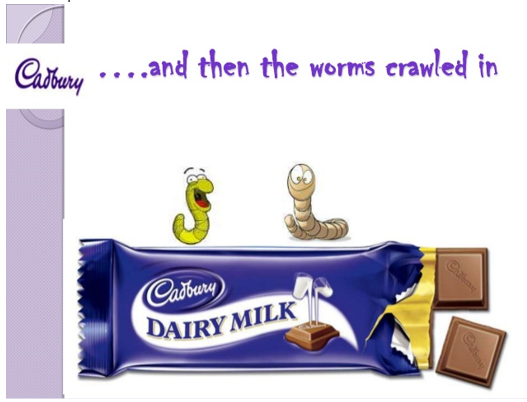
In 2003, just a month before Diwali few instances of worms in its Dairy Milk Bars were reported in Maharashtra. In eight outlets across Maharashtra worms were found. In October 2003, customers in Mumbai complained about finding worms in Cadbury Dairy Milk Bars.

Problems Faced by Cadbury:
When these worms were found in some of the dairy milk bars, Maharashtra Food and Drugs Administration responded quickly to this case and it seized the stocks of chocolate bars which were manufactured in Cadbury’s Pune Plant.

Cadbury in defense issued a statement where it mentioned that problem of worms was not at the manufacturing stage but the problem arose due to poor storage facility by the retailers.
FDA denied the statement made by Cadbury. FDA Commissioner Uttam Khobragade came up with a statement saying “It was presumed that worms got into it at the storage level, but then what about the packing – packaging was not proper or airtight, either ways it’s a manufacturing defect with unhygienic conditions or improper packaging.”
Then there were many allegations and counter allegations between Cadbury and FDA. Due to this event reputation of Cadbury was hampered. Cadbury sales went down by 30% which they had expected to increase by 15% due to negative publicity.
For the first time, Cadbury’s Advertisements went off air for one and a half months after the Diwali due to this controversy
Recovery Strategy:
Project Vishwas:
Cadbury was losing on its sales and also reputation was being hampered. So, recovering from this type of situation was a challenge for Cadbury. In the month of October only Cadbury launched Public Relations (PR) campaign ‘Vishwas’ which was an education initiative covering 190,000 retailers in key states.
Project Vishwas , a three-pronged program that addressed the trade, consumers, media and employees. The project incorporated the following measures:
- A retail monitoring and education program was launched in which quality checks at over 50,000 retail outlets and educated 190,000 wholesalers and retailers was done regarding storage requirements.
- A press ad regarding ‘Facts about Cadbury’ was also published by Cadbury nationally in 55 trade publications which were about channel members taking remedial measures in the company.
- Posters and leaflets on the issue were also distributed to retailers, encouraging them to share them with consumers.
- Cadbury also linked the trade with response cell through a toll-free number and an email id to let them contact the company directly.
- The point-of-view of a company was explained to media, media was also given updates about actions initiated by the company, and encouraged to share them with consumers.
- The company instituted a media desk and diligently answered every media query, friendly or not. The company’s managing director urged media to assure consumers that Cadbury was safe to eat, but that consumers exercise the usual care in purchasing a chocolate that they exercise in purchasing a food item.
- Furthermore, it also promised to implement packaging changes within two months to ensure against poor storage. Cadbury’s MD and key spokespersons had one-to-one sessions with 31 media editors as part of an ‘Outreach’ program initiated in November 2003.
For Employees
- Employees were also briefed about actions taken through meetings with senior managers and email updates from the MD.
Change in Packaging:
January 2004, the company launched a new double packaging that was able to wrap even the smallest 13 gm chocolate in an aluminum foil, heat-sealed for complete protection from all sides and further encased in a poly flow pack. The over-engineered pack, the first of its kind in India, cost a lot to a company, but fulfilled the company’s promise to consumers and media. By investing up to Rs 15 crore (Rs 150 million) on imported machinery, Cadbury’s revamped the packaging of Dairy Milk. The metallic poly-flow was costlier by 10-15 per cent, but Cadbury didn’t hike the pack price.

The new packaging was launched in a media conference. In a conference comparison kits were distributed. These kits were useful in comparing old packs and new packs. A video with packaging and factory shots for television coverage was also launched.
Ad Campaign:
Just after changing packaging Cadbury roped in Amitabh Bachchan as a brand ambassador. From the month January to March 2004, Cadbury came up with a strong Ad campaign which helped them to get back the consumer confidence. During this period Advertising expenses went up by 15% but it really helped Cadbury to get back its reputation.

Current Situation:
After that Incident Cadbury now takes great care of all the products they have. Cadbury is currently leading the market in chocolates segment. Market share of the Cadbury Dairy Milk is around 35% in India. Cadbury has not faced any controversy related to products after that incident.
References:
http://www.rediff.com/money/2006/dec/24cad.htm
http://articles.economictimes.indiatimes.com/2003-10-16/news/27521373_1_bharat-puri-cadbury-india-cadbury-products
Share this:
Related posts.

Cadbury Brand Analysis

Oreo : Case Study Analysis

Pulse Candy – Brand Analysis
Leave a comment cancel reply.

- Already have a WordPress.com account? Log in now.
- Subscribe Subscribed
- Copy shortlink
- Report this content
- View post in Reader
- Manage subscriptions
- Collapse this bar

- Predictive Analytics Workshops
- Corporate Strategy Workshops
- Advanced Excel for MBA
- Powerpoint Workshops
- Digital Transformation
- Competing on Business Analytics
- Aligning Analytics with Strategy
- Building & Sustaining Competitive Advantages
- Corporate Strategy
- Aligning Strategy & Sales
- Digital Marketing
- Hypothesis Testing
- Time Series Analysis
- Regression Analysis
- Machine Learning
- Marketing Strategy
- Branding & Advertising
- Risk Management
- Hedging Strategies
- Network Plotting
- Bar Charts & Time Series
- Technical Analysis of Stocks MACD
- NPV Worksheet
- ABC Analysis Worksheet
- WACC Worksheet
- Porter 5 Forces
- Porter Value Chain
- Amazing Charts
- Garnett Chart
- HBR Case Solution
- 4P Analysis
- 5C Analysis
- NPV Analysis
- SWOT Analysis
- PESTEL Analysis
- Cost Optimization
Kraft Foods Inc. and Cadbury PLC (A): A Nutritious Association?
- Leadership & Managing People / MBA EMBA Resources
Next Case Study Solutions
- Forked River Brewing Co.: Craft Beer Entrepreneurship in an Evolving Industry Case Study Solution
- Kraft Foods Inc. and Cadbury PLC (B): A Sweet Divorce? Case Study Solution
- McDonald's Japan (B): A Crisis of Trust Case Study Solution
- Nestle India Limited: Maggi Noodles at War with the Regulators Case Study Solution
- Wooden Bakery: Should It Enter the U.S. Market? Case Study Solution
Previous Case Solutions
- Din Tai Fung: The Art of the Dumpling Case Study Solution
- Marie Jackson: Revitalizing Renfield Farms Case Study Solution
- The Future of Bush Brothers & Company: Developing a Shared Vision for a Complex Family Enterprise Case Study Solution
- Beneficial State Bank (A): Organization and Measurement of Social Impact Case Study Solution
- Orb: The Next Big Thing (A) Case Study Solution

Predictive Analytics
August 19, 2024

Popular Tags
Case study solutions.

Case Study Solution | Assignment Help | Case Help
Kraft foods inc. and cadbury plc (a): a nutritious association description.
This case comprises two parts. In "Kraft Foods Inc. and Cadbury PLC - Part A - A Nutritious Association?", an investor wonders whether the acquisition of Cadbury is based on sound business sense and whether it will be beneficial to him as a Kraft Foods shareholder. He also puzzles over the value of the mixed payment offered to Cadbury's shareholders. Details are provided about Kraft Foods's activities and businesses, followed by a description of Cadbury. Each company's historical financial statements are appended. Kraft Foods's rationale for the acquisition is provided, together with the structure of the original and final offers. "Kraft Foods Inc. and Cadbury PLC - Part B - A Sweet Divorce?", which focuses on the subsequent "demerger" of the Snacks division less than two years later, can be analyzed in its own right as a second step. Alternatively, the instructor can use it as a conclusion to highlight points related to strategy and disclosure or to the ex-post measurement of synergy effects.
Case Description Kraft Foods Inc. and Cadbury PLC (A): A Nutritious Association?
Strategic managment tools used in case study analysis of kraft foods inc. and cadbury plc (a): a nutritious association, step 1. problem identification in kraft foods inc. and cadbury plc (a): a nutritious association case study, step 2. external environment analysis - pestel / pest / step analysis of kraft foods inc. and cadbury plc (a): a nutritious association case study, step 3. industry specific / porter five forces analysis of kraft foods inc. and cadbury plc (a): a nutritious association case study, step 4. evaluating alternatives / swot analysis of kraft foods inc. and cadbury plc (a): a nutritious association case study, step 5. porter value chain analysis / vrio / vrin analysis kraft foods inc. and cadbury plc (a): a nutritious association case study, step 6. recommendations kraft foods inc. and cadbury plc (a): a nutritious association case study, step 7. basis of recommendations for kraft foods inc. and cadbury plc (a): a nutritious association case study, quality & on time delivery.
100% money back guarantee if the quality doesn't match the promise
100% Plagiarism Free
If the work we produce contain plagiarism then we payback 1000 USD
Paypal Secure
All your payments are secure with Paypal security.
300 Words per Page
We provide 300 words per page unlike competitors' 250 or 275
Free Title Page, Citation Page, References, Exhibits, Revision, Charts
Case study solutions are career defining. Order your custom solution now.
Case Analysis of Kraft Foods Inc. and Cadbury PLC (A): A Nutritious Association?
Kraft Foods Inc. and Cadbury PLC (A): A Nutritious Association? is a Harvard Business (HBR) Case Study on Leadership & Managing People , Texas Business School provides HBR case study assignment help for just $9. Texas Business School(TBS) case study solution is based on HBR Case Study Method framework, TBS expertise & global insights. Kraft Foods Inc. and Cadbury PLC (A): A Nutritious Association? is designed and drafted in a manner to allow the HBR case study reader to analyze a real-world problem by putting reader into the position of the decision maker. Kraft Foods Inc. and Cadbury PLC (A): A Nutritious Association? case study will help professionals, MBA, EMBA, and leaders to develop a broad and clear understanding of casecategory challenges. Kraft Foods Inc. and Cadbury PLC (A): A Nutritious Association? will also provide insight into areas such as – wordlist , strategy, leadership, sales and marketing, and negotiations.
Case Study Solutions Background Work
Kraft Foods Inc. and Cadbury PLC (A): A Nutritious Association? case study solution is focused on solving the strategic and operational challenges the protagonist of the case is facing. The challenges involve – evaluation of strategic options, key role of Leadership & Managing People, leadership qualities of the protagonist, and dynamics of the external environment. The challenge in front of the protagonist, of Kraft Foods Inc. and Cadbury PLC (A): A Nutritious Association?, is to not only build a competitive position of the organization but also to sustain it over a period of time.
Strategic Management Tools Used in Case Study Solution
The Kraft Foods Inc. and Cadbury PLC (A): A Nutritious Association? case study solution requires the MBA, EMBA, executive, professional to have a deep understanding of various strategic management tools such as SWOT Analysis, PESTEL Analysis / PEST Analysis / STEP Analysis, Porter Five Forces Analysis, Go To Market Strategy, BCG Matrix Analysis, Porter Value Chain Analysis, Ansoff Matrix Analysis, VRIO / VRIN and Marketing Mix Analysis.
Texas Business School Approach to Leadership & Managing People Solutions
In the Texas Business School, Kraft Foods Inc. and Cadbury PLC (A): A Nutritious Association? case study solution – following strategic tools are used - SWOT Analysis, PESTEL Analysis / PEST Analysis / STEP Analysis, Porter Five Forces Analysis, Go To Market Strategy, BCG Matrix Analysis, Porter Value Chain Analysis, Ansoff Matrix Analysis, VRIO / VRIN and Marketing Mix Analysis. We have additionally used the concept of supply chain management and leadership framework to build a comprehensive case study solution for the case – Kraft Foods Inc. and Cadbury PLC (A): A Nutritious Association?
Step 1 – Problem Identification of Kraft Foods Inc. and Cadbury PLC (A): A Nutritious Association? - Harvard Business School Case Study
The first step to solve HBR Kraft Foods Inc. and Cadbury PLC (A): A Nutritious Association? case study solution is to identify the problem present in the case. The problem statement of the case is provided in the beginning of the case where the protagonist is contemplating various options in the face of numerous challenges that Kraft Cadbury is facing right now. Even though the problem statement is essentially – “Leadership & Managing People” challenge but it has impacted by others factors such as communication in the organization, uncertainty in the external environment, leadership in Kraft Cadbury, style of leadership and organization structure, marketing and sales, organizational behavior, strategy, internal politics, stakeholders priorities and more.
Step 2 – External Environment Analysis
Texas Business School approach of case study analysis – Conclusion, Reasons, Evidences - provides a framework to analyze every HBR case study. It requires conducting robust external environmental analysis to decipher evidences for the reasons presented in the Kraft Foods Inc. and Cadbury PLC (A): A Nutritious Association?. The external environment analysis of Kraft Foods Inc. and Cadbury PLC (A): A Nutritious Association? will ensure that we are keeping a tab on the macro-environment factors that are directly and indirectly impacting the business of the firm.
What is PESTEL Analysis? Briefly Explained
PESTEL stands for political, economic, social, technological, environmental and legal factors that impact the external environment of firm in Kraft Foods Inc. and Cadbury PLC (A): A Nutritious Association? case study. PESTEL analysis of " Kraft Foods Inc. and Cadbury PLC (A): A Nutritious Association?" can help us understand why the organization is performing badly, what are the factors in the external environment that are impacting the performance of the organization, and how the organization can either manage or mitigate the impact of these external factors.
How to do PESTEL / PEST / STEP Analysis? What are the components of PESTEL Analysis?
As mentioned above PESTEL Analysis has six elements – political, economic, social, technological, environmental, and legal. All the six elements are explained in context with Kraft Foods Inc. and Cadbury PLC (A): A Nutritious Association? macro-environment and how it impacts the businesses of the firm.
How to do PESTEL Analysis for Kraft Foods Inc. and Cadbury PLC (A): A Nutritious Association?
To do comprehensive PESTEL analysis of case study – Kraft Foods Inc. and Cadbury PLC (A): A Nutritious Association? , we have researched numerous components under the six factors of PESTEL analysis.
Political Factors that Impact Kraft Foods Inc. and Cadbury PLC (A): A Nutritious Association?
Political factors impact seven key decision making areas – economic environment, socio-cultural environment, rate of innovation & investment in research & development, environmental laws, legal requirements, and acceptance of new technologies.
Government policies have significant impact on the business environment of any country. The firm in “ Kraft Foods Inc. and Cadbury PLC (A): A Nutritious Association? ” needs to navigate these policy decisions to create either an edge for itself or reduce the negative impact of the policy as far as possible.
Data safety laws – The countries in which Kraft Cadbury is operating, firms are required to store customer data within the premises of the country. Kraft Cadbury needs to restructure its IT policies to accommodate these changes. In the EU countries, firms are required to make special provision for privacy issues and other laws.
Competition Regulations – Numerous countries have strong competition laws both regarding the monopoly conditions and day to day fair business practices. Kraft Foods Inc. and Cadbury PLC (A): A Nutritious Association? has numerous instances where the competition regulations aspects can be scrutinized.
Import restrictions on products – Before entering the new market, Kraft Cadbury in case study Kraft Foods Inc. and Cadbury PLC (A): A Nutritious Association?" should look into the import restrictions that may be present in the prospective market.
Export restrictions on products – Apart from direct product export restrictions in field of technology and agriculture, a number of countries also have capital controls. Kraft Cadbury in case study “ Kraft Foods Inc. and Cadbury PLC (A): A Nutritious Association? ” should look into these export restrictions policies.
Foreign Direct Investment Policies – Government policies favors local companies over international policies, Kraft Cadbury in case study “ Kraft Foods Inc. and Cadbury PLC (A): A Nutritious Association? ” should understand in minute details regarding the Foreign Direct Investment policies of the prospective market.
Corporate Taxes – The rate of taxes is often used by governments to lure foreign direct investments or increase domestic investment in a certain sector. Corporate taxation can be divided into two categories – taxes on profits and taxes on operations. Taxes on profits number is important for companies that already have a sustainable business model, while taxes on operations is far more significant for companies that are looking to set up new plants or operations.
Tariffs – Chekout how much tariffs the firm needs to pay in the “ Kraft Foods Inc. and Cadbury PLC (A): A Nutritious Association? ” case study. The level of tariffs will determine the viability of the business model that the firm is contemplating. If the tariffs are high then it will be extremely difficult to compete with the local competitors. But if the tariffs are between 5-10% then Kraft Cadbury can compete against other competitors.
Research and Development Subsidies and Policies – Governments often provide tax breaks and other incentives for companies to innovate in various sectors of priority. Managers at Kraft Foods Inc. and Cadbury PLC (A): A Nutritious Association? case study have to assess whether their business can benefit from such government assistance and subsidies.
Consumer protection – Different countries have different consumer protection laws. Managers need to clarify not only the consumer protection laws in advance but also legal implications if the firm fails to meet any of them.
Political System and Its Implications – Different political systems have different approach to free market and entrepreneurship. Managers need to assess these factors even before entering the market.
Freedom of Press is critical for fair trade and transparency. Countries where freedom of press is not prevalent there are high chances of both political and commercial corruption.
Corruption level – Kraft Cadbury needs to assess the level of corruptions both at the official level and at the market level, even before entering a new market. To tackle the menace of corruption – a firm should have a clear SOP that provides managers at each level what to do when they encounter instances of either systematic corruption or bureaucrats looking to take bribes from the firm.
Independence of judiciary – It is critical for fair business practices. If a country doesn’t have independent judiciary then there is no point entry into such a country for business.
Government attitude towards trade unions – Different political systems and government have different attitude towards trade unions and collective bargaining. The firm needs to assess – its comfort dealing with the unions and regulations regarding unions in a given market or industry. If both are on the same page then it makes sense to enter, otherwise it doesn’t.
Economic Factors that Impact Kraft Foods Inc. and Cadbury PLC (A): A Nutritious Association?
Social factors that impact kraft foods inc. and cadbury plc (a): a nutritious association, technological factors that impact kraft foods inc. and cadbury plc (a): a nutritious association, environmental factors that impact kraft foods inc. and cadbury plc (a): a nutritious association, legal factors that impact kraft foods inc. and cadbury plc (a): a nutritious association, step 3 – industry specific analysis, what is porter five forces analysis, step 4 – swot analysis / internal environment analysis, step 5 – porter value chain / vrio / vrin analysis, step 6 – evaluating alternatives & recommendations, step 7 – basis for recommendations, references :: kraft foods inc. and cadbury plc (a): a nutritious association case study solution.
- sales & marketing ,
- leadership ,
- corporate governance ,
- Advertising & Branding ,
- Corporate Social Responsibility (CSR) ,
Amanda Watson
Leave your thought here

© 2019 Texas Business School. All Rights Reserved
USEFUL LINKS
Follow us on.
Subscribe to our newsletter to receive news on update.

Dark Brown Leather Watch
$200.00 $180.00

Dining Chair
$300.00 $220.00

Creative Wooden Stand
$100.00 $80.00
2 x $180.00
2 x $220.00
Subtotal: $200.00
Free Shipping on All Orders Over $100!

Wooden round table
$360.00 $300.00
Hurley Dry-Fit Chino Short. Men's chino short. Outseam Length: 19 Dri-FIT Technology helps keep you dry and comfortable. Made with sweat-wicking fabric. Fitted waist with belt loops. Button waist with zip fly provides a classic look and feel .
| SKU: | 12345 |
| Categories: | , , |
| Tags: | , |
| Share on: |
Child Slave Labor in Cadbury Chocolate Company Case Study
- To find inspiration for your paper and overcome writer’s block
- As a source of information (ensure proper referencing)
- As a template for you assignment
In Cadbury case analysis, the central issue is child slave labor that was being used in the production of chocolate. This issue led Congress to create legislation that called for the USFDA to create a “no forced labor” accreditation that could be appended to chocolate by manufacturers who could ascertain that their supply chains did not use slave labor.
The accusations of slave and child labor in the cocoa chain negative impacted the Cadbury Company significantly. In tabulated form, this paper seeks to describe each significant symptom (problem or case fact), causes of the symptoms, both surface causes and underlying ones, and recommendations for improvements and management principles used.
| | | |
| Working toward a certification of cocoa harvested without slave labor. | ||
| Slave Labor | ||
| Ending Child, and slave labor in the cocoa industry | ||
| Getting Congress, CMA, and local farms on the same page | ||
| 4-year deadline for international protocol |
The majority of problems seem to have stemmed from poor leadership and communication from Cadbury. The decision to end slave or child labor would cause the least amount of harm than the most significant benefit it will reap. The companies might lose some profits by paying better wages to workers, but this will increase the rights and living conditions of people exponentially.
The children will get the rights they deserve and be free as no human should be subjected to slavery. Additionally, Legislations attempt to force cocoa companies to change the method of farming rates lie well under the core ethic of justice. Justice for the employees should be paid instead of enslavement and impartiality by Cadbury and the company should acknowledge that their products are produced through slave labor.
- Themes and Patterns of Engagement
- Honda A - Organizational Change & Development
- Cadbury: Business Pricing Strategies
- Analysis of the Cadbury Chocolate Commercial
- Cadbury Takeover by Kraft: Failure Analysis
- Costco Wholesale External Analysis
- Ethics Unwrapped: Apple Suppliers & Labor Practices
- Insolar Brazil Company's Internal Sources of Funding
- Telecommunications: The Case of SewWorld
- Smith Radiators: Case Study
- Chicago (A-D)
- Chicago (N-B)
IvyPanda. (2022, July 19). Child Slave Labor in Cadbury Chocolate Company. https://ivypanda.com/essays/child-slave-labor-in-cadbury-chocolate-company/
"Child Slave Labor in Cadbury Chocolate Company." IvyPanda , 19 July 2022, ivypanda.com/essays/child-slave-labor-in-cadbury-chocolate-company/.
IvyPanda . (2022) 'Child Slave Labor in Cadbury Chocolate Company'. 19 July.
IvyPanda . 2022. "Child Slave Labor in Cadbury Chocolate Company." July 19, 2022. https://ivypanda.com/essays/child-slave-labor-in-cadbury-chocolate-company/.
1. IvyPanda . "Child Slave Labor in Cadbury Chocolate Company." July 19, 2022. https://ivypanda.com/essays/child-slave-labor-in-cadbury-chocolate-company/.
Bibliography
IvyPanda . "Child Slave Labor in Cadbury Chocolate Company." July 19, 2022. https://ivypanda.com/essays/child-slave-labor-in-cadbury-chocolate-company/.

Cadbury Schweppes Capturing Confectionery (A) Case Study Solution Analysis
by HBR Forty Four
Cadbury Schweppes Capturing Confectionery (A) Case Study Solution Analysis. Get Cadbury Schweppes Capturing Confectionery (A) Case Study Analysis Solution. Contact us directly at buycasesolutions(at)gmail(dot)com if you want to order for Cadbury Schweppes... More
Cadbury Schweppes Capturing Confectionery (A) Case Study Solution Analysis. Get Cadbury Schweppes Capturing Confectionery (A) Case Study Analysis Solution. Contact us directly at buycasesolutions(at)gmail(dot)com if you want to order for Cadbury Schweppes Capturing Confectionery (A) Case Solution, Case Analysis, Case Study Solution. David J. Collis, Toby Stuart, Troy Smith Less
- Related publications
- Add to favorites

Cadbury Company
- Harvard Case Studies
Harvard Business Case Studies Solutions – Assignment Help
In most courses studied at Harvard Business schools, students are provided with a case study. Major HBR cases concerns on a whole industry, a whole organization or some part of organization; profitable or non-profitable organizations. Student’s role is to analyze the case and diagnose the situation, identify the problem and then give appropriate recommendations and steps to be taken.
To make a detailed case analysis, student should follow these steps:
STEP 1: Reading Up Harvard Case Study Method Guide:
Case study method guide is provided to students which determine the aspects of problem needed to be considered while analyzing a case study. It is very important to have a thorough reading and understanding of guidelines provided. However, poor guide reading will lead to misunderstanding of case and failure of analyses. It is recommended to read guidelines before and after reading the case to understand what is asked and how the questions are to be answered. Therefore, in-depth understanding f case guidelines is very important.

Harvard Case Study Solutions
STEP 2: Reading The Cadbury Company Harvard Case Study:
To have a complete understanding of the case, one should focus on case reading. It is said that case should be read two times. Initially, fast reading without taking notes and underlines should be done. Initial reading is to get a rough idea of what information is provided for the analyses. Then, a very careful reading should be done at second time reading of the case. This time, highlighting the important point and mark the necessary information provided in the case. In addition, the quantitative data in case, and its relations with other quantitative or qualitative variables should be given more importance. Also, manipulating different data and combining with other information available will give a new insight. However, all of the information provided is not reliable and relevant.
When having a fast reading, following points should be noted:
- Nature of organization
- Nature if industry in which organization operates.
- External environment that is effecting organization
- Problems being faced by management
- Identification of communication strategies.
- Any relevant strategy that can be added.
- Control and out-of-control situations.
When reading the case for second time, following points should be considered:
- Decisions needed to be made and the responsible Person to make decision.
- Objectives of the organization and key players in this case.
- The compatibility of objectives. if not, their reconciliations and necessary redefinition.
- Sources and constraints of organization from meeting its objectives.
After reading the case and guidelines thoroughly, reader should go forward and start the analyses of the case.
STEP 3: Doing The Case Analysis Of Cadbury Company:
To make an appropriate case analyses, firstly, reader should mark the important problems that are happening in the organization. There may be multiple problems that can be faced by any organization. Secondly, after identifying problems in the company, identify the most concerned and important problem that needed to be focused.
Firstly, the introduction is written. After having a clear idea of what is defined in the case, we deliver it to the reader. It is better to start the introduction from any historical or social context. The challenging diagnosis for Cadbury Company and the management of information is needed to be provided. However, introduction should not be longer than 6-7 lines in a paragraph. As the most important objective is to convey the most important message for to the reader.
After introduction, problem statement is defined. In the problem statement, the company’s most important problem and constraints to solve these problems should be define clearly. However, the problem should be concisely define in no more than a paragraph. After defining the problems and constraints, analysis of the case study is begin.
STEP 4: SWOT Analysis of the Cadbury Company HBR Case Solution:
SWOT analysis helps the business to identify its strengths and weaknesses, as well as understanding of opportunity that can be availed and the threat that the company is facing. SWOT for Cadbury Company is a powerful tool of analysis as it provide a thought to uncover and exploit the opportunities that can be used to increase and enhance company’s operations. In addition, it also identifies the weaknesses of the organization that will help to be eliminated and manage the threats that would catch the attention of the management.
This strategy helps the company to make any strategy that would differentiate the company from competitors, so that the organization can compete successfully in the industry. The strengths and weaknesses are obtained from internal organization. Whereas, the opportunities and threats are generally related from external environment of organization. Moreover, it is also called Internal-External Analysis.
In the strengths, management should identify the following points exists in the organization:
- Advantages of the organization
- Activities of the company better than competitors.
- Unique resources and low cost resources company have.
- Activities and resources market sees as the company’s strength.
- Unique selling proposition of the company.
WEAKNESSES:
- Improvement that could be done.
- Activities that can be avoided for Cadbury Company.
- Activities that can be determined as your weakness in the market.
- Factors that can reduce the sales.
- Competitor’s activities that can be seen as your weakness.
OPPORTUNITIES:
- Good opportunities that can be spotted.
- Interesting trends of industry.
- Change in technology and market strategies
- Government policy changes that is related to the company’s field
- Changes in social patterns and lifestyles.
- Local events.
Following points can be identified as a threat to company:
- Company’s facing obstacles.
- Activities of competitors.
- Product and services quality standards
- Threat from changing technologies
- Financial/cash flow problems
- Weakness that threaten the business.
Following points should be considered when applying SWOT to the analysis:
- Precise and verifiable phrases should be sued.
- Prioritize the points under each head, so that management can identify which step has to be taken first.
- Apply the analyses at proposed level. Clear yourself first that on what basis you have to apply SWOT matrix.
- Make sure that points identified should carry itself with strategy formulation process.
- Use particular terms (like USP, Core Competencies Analyses etc.) to get a comprehensive picture of analyses.
STEP 5: PESTEL/ PEST Analysis of Cadbury Company Case Solution:
Pest analyses is a widely used tool to analyze the Political, Economic, Socio-cultural, Technological, Environmental and legal situations which can provide great and new opportunities to the company as well as these factors can also threat the company, to be dangerous in future.
Pest analysis is very important and informative. It is used for the purpose of identifying business opportunities and advance threat warning. Moreover, it also helps to the extent to which change is useful for the company and also guide the direction for the change. In addition, it also helps to avoid activities and actions that will be harmful for the company in future, including projects and strategies.
To analyze the business objective and its opportunities and threats, following steps should be followed:
- Brainstorm and assumption the changes that should be made to organization. Answer the necessary questions that are related to specific needs of organization
- Analyze the opportunities that would be happen due to the change.
- Analyze the threats and issues that would be caused due to change.
- Perform cost benefit analyses and take the appropriate action.
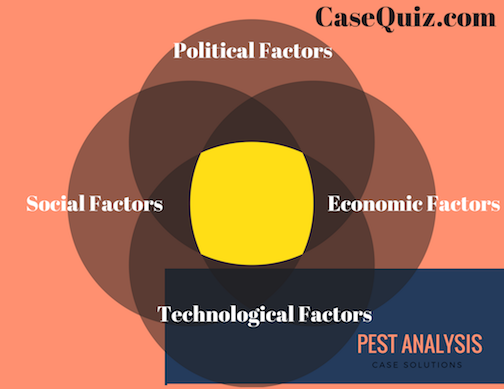
Pest analysis
PEST FACTORS:
- Next political elections and changes that will happen in the country due to these elections
- Strong and powerful political person, his point of view on business policies and their effect on the organization.
- Strength of property rights and law rules. And its ratio with corruption and organized crimes. Changes in these situation and its effects.
- Change in Legislation and taxation effects on the company
- Trend of regulations and deregulations. Effects of change in business regulations
- Timescale of legislative change.
- Other political factors likely to change for Cadbury Company.
ECONOMICAL:
- Position and current economy trend i.e. growing, stagnant or declining.
- Exchange rates fluctuations and its relation with company.
- Change in Level of customer’s disposable income and its effect.
- Fluctuation in unemployment rate and its effect on hiring of skilled employees
- Access to credit and loans. And its effects on company
- Effect of globalization on economic environment
- Considerations on other economic factors
SOCIO-CULTURAL:
- Change in population growth rate and age factors, and its impacts on organization.
- Effect on organization due to Change in attitudes and generational shifts.
- Standards of health, education and social mobility levels. Its changes and effects on company.
- Employment patterns, job market trend and attitude towards work according to different age groups.

case study solutions
- Social attitudes and social trends, change in socio culture an dits effects.
- Religious believers and life styles and its effects on organization
- Other socio culture factors and its impacts.
TECHNOLOGICAL:
- Any new technology that company is using
- Any new technology in market that could affect the work, organization or industry
- Access of competitors to the new technologies and its impact on their product development/better services.
- Research areas of government and education institutes in which the company can make any efforts
- Changes in infra-structure and its effects on work flow
- Existing technology that can facilitate the company
- Other technological factors and their impacts on company and industry
These headings and analyses would help the company to consider these factors and make a “big picture” of company’s characteristics. This will help the manager to take the decision and drawing conclusion about the forces that would create a big impact on company and its resources.
STEP 6: Porter’s Five Forces/ Strategic Analysis Of The Cadbury Company Case Study:
To analyze the structure of a company and its corporate strategy, Porter’s five forces model is used. In this model, five forces have been identified which play an important part in shaping the market and industry. These forces are used to measure competition intensity and profitability of an industry and market.
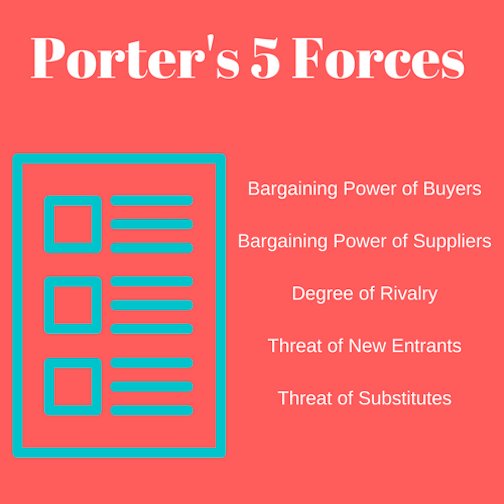
porter’s five forces model
These forces refers to micro environment and the company ability to serve its customers and make a profit. These five forces includes three forces from horizontal competition and two forces from vertical competition. The five forces are discussed below:
- THREAT OF NEW ENTRANTS:
- as the industry have high profits, many new entrants will try to enter into the market. However, the new entrants will eventually cause decrease in overall industry profits. Therefore, it is necessary to block the new entrants in the industry. following factors is describing the level of threat to new entrants:
- Barriers to entry that includes copy rights and patents.
- High capital requirement
- Government restricted policies
- Switching cost
- Access to suppliers and distributions
- Customer loyalty to established brands.
- THREAT OF SUBSTITUTES:
- this describes the threat to company. If the goods and services are not up to the standard, consumers can use substitutes and alternatives that do not need any extra effort and do not make a major difference. For example, using Aquafina in substitution of tap water, Pepsi in alternative of Coca Cola. The potential factors that made customer shift to substitutes are as follows:
- Price performance of substitute
- Switching costs of buyer
- Products substitute available in the market
- Reduction of quality
- Close substitution are available
- DEGREE OF INDUSTRY RIVALRY:
- the lesser money and resources are required to enter into any industry, the higher there will be new competitors and be an effective competitor. It will also weaken the company’s position. Following are the potential factors that will influence the company’s competition:
- Competitive advantage
- Continuous innovation
- Sustainable position in competitive advantage
- Level of advertising
- Competitive strategy
- BARGAINING POWER OF BUYERS:
- it deals with the ability of customers to take down the prices. It mainly consists the importance of a customer and the level of cost if a customer will switch from one product to another. The buyer power is high if there are too many alternatives available. And the buyer power is low if there are lesser options of alternatives and switching. Following factors will influence the buying power of customers:
- Bargaining leverage
- Switching cost of a buyer
- Buyer price sensitivity
- Competitive advantage of company’s product
- BARGAINING POWER OF SUPPLIERS:
- this refers to the supplier’s ability of increasing and decreasing prices. If there are few alternatives o supplier available, this will threat the company and it would have to purchase its raw material in supplier’s terms. However, if there are many suppliers alternative, suppliers have low bargaining power and company do not have to face high switching cost. The potential factors that effects bargaining power of suppliers are the following:
- Input differentiation
- Impact of cost on differentiation
- Strength of distribution centers
- Input substitute’s availability.
STEP 7: VRIO Analysis of Cadbury Company:
Vrio analysis for Cadbury Company case study identified the four main attributes which helps the organization to gain a competitive advantages. The author of this theory suggests that firm must be valuable, rare, imperfectly imitable and perfectly non sustainable. Therefore there must be some resources and capabilities in an organization that can facilitate the competitive advantage to company. The four components of VRIO analysis are described below: VALUABLE: the company must have some resources or strategies that can exploit opportunities and defend the company from major threats. If the company holds some value then answer is yes. Resources are also valuable if they provide customer satisfaction and increase customer value. This value may create by increasing differentiation in existing product or decrease its price. Is these conditions are not met, company may lead to competitive disadvantage. Therefore, it is necessary to continually review the Cadbury Company company’s activities and resources values. RARE: the resources of the Cadbury Company company that are not used by any other company are known as rare. Rare and valuable resources grant much competitive advantages to the firm. However, when more than one few companies uses the same resources and provide competitive parity are also known as rare resources. Even, the competitive parity is not desired position, but the company should not lose its valuable resources, even they are common. COSTLY TO IMITATE: the resources are costly to imitate, if other organizations cannot imitate it. However, imitation is done in two ways. One is duplicating that is direct imitation and the other one is substituting that is indirect imitation. Any firm who has valuable and rare resources, and these resources are costly to imitate, have achieved their competitive advantage. However, resources should also be perfectly non sustainable. The reasons that resource imitation is costly are historical conditions, casual ambiguity and social complexity. ORGANIZED TO CAPTURE VALUE: resources, itself, cannot provide advantages to organization until it is organized and exploit to do so. A firm (like Cadbury Company) must organize its management systems, processes, policies and strategies to fully utilize the resource’s potential to be valuable, rare and costly to imitate.
STEP 8: Generating Alternatives For Cadbury Company Case Solution:
After completing the analyses of the company, its opportunities and threats, it is important to generate a solution of the problem and the alternatives a company can apply in order to solve its problems. To generate the alternative of problem, following things must to be kept in mind:
- Realistic solution should be identified that can be operated in the company, with all its constraints and opportunities.
- as the problem and its solution cannot occur at the same time, it should be described as mutually exclusive
- it is not possible for a company to not to take any action, therefore, the alternative of doing nothing is not viable.
- Student should provide more than one decent solution. Providing two undesirable alternatives to make the other one attractive is not acceptable.
Once the alternatives have been generated, student should evaluate the options and select the appropriate and viable solution for the company.
STEP 9: Selection Of Alternatives For Cadbury Company Case Solution:
It is very important to select the alternatives and then evaluate the best one as the company have limited choices and constraints. Therefore to select the best alternative, there are many factors that is needed to be kept in mind. The criteria’s on which business decisions are to be selected areas under:
- Improve profitability
- Increase sales, market shares, return on investments
- Customer satisfaction
- Brand image
- Corporate mission, vision and strategy
- Resources and capabilities
Alternatives should be measures that which alternative will perform better than other one and the valid reasons. In addition, alternatives should be related to the problem statements and issues described in the case study.
STEP 10: Evaluation Of Alternatives For Cadbury Company Case Solution:
If the selected alternative is fulfilling the above criteria, the decision should be taken straightforwardly. Best alternative should be selected must be the best when evaluating it on the decision criteria. Another method used to evaluate the alternatives are the list of pros and cons of each alternative and one who has more pros than cons and can be workable under organizational constraints.
STEP 11: Recommendations For Cadbury Company Case Study (Solution):
There should be only one recommendation to enhance the company’s operations and its growth or solving its problems. The decision that is being taken should be justified and viable for solving the problems.
Cadbury Schweppes: Capturing Confectionery (D)
Case solution.
David J. Collis, Toby Stuart, Troy Smith Harvard Business School ( 708491-PDF-ENG ) March 07, 2008
We don‘t have the case solution, but we pay up to $50 for yours!
- Set a reminder to receive an email after your university‘s case study deadline.
- Upload your case study solution. We will review it for quality.
- Get your money via PayPal or to your bank account.

IMAGES
COMMENTS
Cadbury Crisis Management Case Study: Preserving Trust in Times of Crisis. Tahir Abbas May 28, 2023. In the realm of beloved chocolate brands, Cadbury has long held a cherished place in the hearts and taste buds of consumers worldwide. However, even the most esteemed companies are not immune to crises that can pose significant threats to their ...
Cadbury had become to the 24th largest manufacturing company in the United Kingdom by 1930. Cadbury and Schweppes combined in 1969 to establish Cadbury Schweppes. Schweppes was a well-known British soft drink and carbonated mineral water manufacturer. Hershey was given the rights to make Cadbury candy products, and Schweppes Beverages was formed.
Cadbury Case Study: Place. With a strong market hold, the company aims to provide delectable products to every nook and corner of the world. With production facilities available in countries like the UK, Poland, Russia, India, and Australia, the company focuses on maintaining the quality of the product and giving a hint of local flavours that ...
Case Study Solutions Background Work. Cadbury Schweppes: Capturing Confectionery (B) case study solution is focused on solving the strategic and operational challenges the protagonist of the case is facing. The challenges involve - evaluation of strategic options, key role of Strategy & Execution, leadership qualities of the protagonist, and ...
The strategic partnerships that Cadbury has developed with important parties, like suppliers and retailers, have helped to strengthen its position as the market leader in the global confectionery industry. The Cadbury marketing strategy is a fascinating case study for the marketing sector because of the convergence of all these factors.
Case Study: Cadbury Crisis Management (Worm Controversy) In India chocolate consumption was very low in the early 90's but as the decade advanced the consumption drastically increased. The late 90's witnessed a good chocolate market condition. The chocolate market in India is dominated by two multinational companies — Cadbury and Nestle.
In late 2002, the global confectionery and beverage maker Cadbury Schweppes to decide whether or not to rely on the acquisition of Adams, underperforming gum company, which was put up for sale the pharmaceutical giant Pfizer.Considering the decision from a strategic point of view, (A) the case is a brief history of the two companies and traces the global confectionery industry, focusing on ...
Overview. This case study explains the history and product development of Cadbury World; aspects of its operational and marketing functions, as well as providing some key numerical data. It is intended to provide students and other interested parties with a snapshot view of and insight into one of the UK's leading leisure attractions.
Marketing Strategy Of Cadbury. Marketing is the way in which an organisation matches its own human, financial and physical resources with the wants of its customers. Seeing as many organisations continue in business over relatively long periods of time, it is necessary for them to plan the human, financial and physical resources they have to ...
The Brief. Cadbury, the world's 2nd largest confectionary company, sponsored and was the official treat provider to the London 2012 Olympics. To activate its sponsorship Cadbury launched the Spots v Stripes campaign. At the heart of the integrated two-year campaign was Race Season - a core campaign to supercharge consumer engagement - Cadbury ...
The case solution first identifies the central issue to the Cadbury Schweppes Capturing Confectionery B case study, and the relevant stakeholders affected by this issue. This is known as the problem identification stage. After this, the relevant tools and models are used, which help in the case study analysis and case study solution.
After four months of continuous resistance, Cadbury shareholders agreed to Kraft's offering of $19.5 billion, (840 pence per share). This was agreed upon with the spirit of creating the world's largest confectioner. This consisted of 500 pence in cash per share and the remaining amount paid to Cadbury shareholder in the form of Kraft shares.
Cadbury : Case Study Analysis. simconblog / June 19, 2016. Introduction to Case. Cadbury is a brand which almost everyone knows. Even after completion of more than 100 years, the brand is into hearts of many people & it also leaves a significant mark amidst all the competition. Cadbury stands tall in food product sector.
Kraft Foods Inc. and Cadbury PLC (A): A Nutritious Association? is a Harvard Business (HBR) Case Study on Leadership & Managing People , Texas Business School provides HBR case study assignment help for just $9. Texas Business School(TBS) case study solution is based on HBR Case Study Method framework, TBS expertise & global insights.
The accusations of slave and child labor in the cocoa chain negative impacted the Cadbury Company significantly. In tabulated form, this paper seeks to describe each significant symptom (problem or case fact), causes of the symptoms, both surface causes and underlying ones, and recommendations for improvements and management principles used.
Observers argued that this left Cadbury, a company that had done much to improve its supply chain, in a difficult position. This case was prepared for inclusion in Sage Business Cases primarily as a basis for classroom discussion or self-study, and is not meant to illustrate either effective or ineffective management styles.
Get Case Study Solution and Analysis of Pursuing Cadbury A in a FAIR PRICE!! Steps for Case Study Solution Analysis: 1. Introduction of Pursuing Cadbury A Case Solution The Pursuing Cadbury A case study is a Harvard Business Review case study, which presents a simulated practical experience to the reader allowing them to learn about
The method through which the analysis is done is mentioned, followed by the relevant tools used in finding the solution. The case solution first identifies the central issue to the Cadbury Schweppes Capturing Confectionery (A) case study, and the relevant stakeholders affected by this issue. This is known as the problem identification stage.
STEP 1: Reading Up Harvard Case Study Method Guide: Case study method guide is provided to students which determine the aspects of problem needed to be considered while analyzing a case study. It is very important to have a thorough reading and understanding of guidelines provided. However, poor guide reading will lead to misunderstanding of ...
March 07, 2008. In late 2002, global confectionery and beverage manufacturer Cadbury Schweppes had to decide whether to bid for Adams, an underperforming chewing gum company put up for sale by pharmaceutical giant Pfizer. Case (A) analyzes the decision from a strategic point of view and provides a brief history of the two companies; tracks the ...